Financial Instability Hypothesis
description: an economic theory proposed by Hyman Minsky, suggesting that financial markets are inherently unstable and prone to crises
40 results
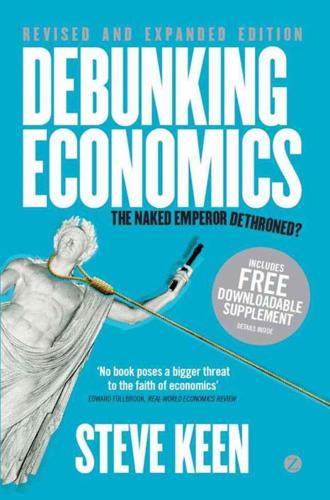
Debunking Economics - Revised, Expanded and Integrated Edition: The Naked Emperor Dethroned?
by
Steve Keen
Published 21 Sep 2011
Keen, S. (1993a) ‘Use-value, exchange-value, and the demise of Marx’s labor theory of value,’ Journal of the History of Economic Thought, 15: 107–21. Keen, S. (1993b) ‘The misinterpretation of Marx’s theory of value,’ Journal of the History of Economic Thought, 15: 282–300. Keen, S. (1995) ‘Finance and economic breakdown: modeling Minsky’s “Financial Instability Hypothesis,”’ Journal of Post Keynesian Economics, 17(4): 607–35. Keen, S. (1996) ‘The chaos of finance: the chaotic and Marxian foundations of Minsky’s “Financial Instability Hypothesis,”’ Economies et Sociétés, 30(2/3): 55–82. Keen, S. (1998) ‘Answers (and questions) for Sraffians (and Kaleckians),’ Review of Political Economy, 10: 73–87. Keen, S. (2000) ‘The nonlinear dynamics of debt-deflation,’ in W.
…
DotCom bubble double-entry bookkeeping Dow, Sheila Dow Jones Industrial Average, movements of dynamic analysis Dynamic Stochastic General Equilibrium model (DGSE); uselessness of earthquakes, theory of Econlit online service econometric models, large-scale economics: as pre-science; as science; different from true sciences; dumbing-down of textbooks; future of; loss of interest in; methodology of; need for revolution in; neoclassical see neoclassical economics; paradigm shifts in; teaching of economies of scale econophysics efficiency of markets efficient markets hypothesis; contradicted; failure of Ehrenberg, Andrew Einstein, Albert; Theory of Relativity emergent behavior emergent properties, concept of employment, theory of Engel curves entrepreneur, role of; as key actor entropy equilibrium; conflated with economic utopia; dismissed by Keynes; general (unreal assumptions of); in exchange rate of commodities; in Marx; in neoclassical theory; instability of; irrelevance of; partial equilibrium method; self-equilibrating economy; value of shares; Walrasian model of Escher drawings euphoric economy European Union (EU), and economic growth evolutionary school of economics exchange, in primitive societies exchange-value expectation; formation of; rational expected value, concept of experiments, importance of externalities ‘F-twist’ factories, built with excess capacity factors of production; fixed; flows of; variable failure to see crisis coming false equalities Fama, Eugene Federal Reserve Board; mismanagement of money supply feudalism finance sector; reform of financial assets: analysis of; pricing of Financial Crisis Inquiry Commission Financial Crisis Observatory Financial Instability Hypothesis see Minsky’s Financial Instability Hypothesis firm, theory of (neoclassical) Fisher, Irving; bankruptcy of; debt deflation paper; The Theory of Interest flat world analogy Fokker-Planck model fractal geometry Fractal Markets Hypothesis Fractional Reserve Banking Freakonomics freedom, and labor French, Kenneth freshwater v. saltwater macroeconomics Friedman, Milton; ‘assumptions don’t matter’; helicopter image; paper on methodology full employment Fullbrook, Edward Fullwiler, Scott Galbraith, J.
…
And so to battle. 1 | PREDICTING THE ‘UNPREDICTABLE’ A major motivation for writing the first edition of this book was my feeling in 2000 that a serious economic crisis was imminent, and that it was therefore an apt time to explain to the wider, non-academic community how economic theory was not merely inherently flawed, but had helped cause the calamity I expected. At the time, I thought that the bursting of the DotCom Bubble would mark the beginning of the crisis – though I was cautious in saying so, because my work in modeling Minsky’s Financial Instability Hypothesis (Keen 1995) had confirmed one aspect of his theory, the capacity of government spending to prevent a debt crisis that would have occurred in a pure credit economy. Statements that a crisis may occur were edited out of this edition, because the crisis has occurred – after the Subprime Bubble, which was in the background during the DotCom Bubble, finally burst as well.1 But these pre-crisis statements remain important, because they indicate that, without the blinkers that neoclassical economic theory puts over the eyes of economists, the crisis now known as the Great Recession was not an unpredictable ‘Black Swan’ event, but an almost blindingly obvious certainty.
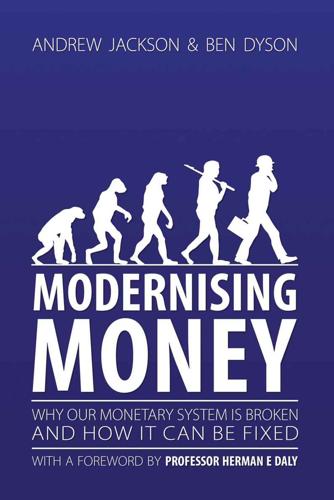
Modernising Money: Why Our Monetary System Is Broken and How It Can Be Fixed
by
Andrew Jackson (economist)
and
Ben Dyson (economist)
Published 15 Nov 2012
Chiefly, the long-run dynamic implications of credit creation were ignored, such as the self-reinforcing nature of asset price bubbles, the long run implications of increasing debt, the speculative behaviour of individuals and businesses, and the potential for recessions, depressions, financial crises and debt deflations. This section corrects that omission by outlining Hyman Minsky’s Financial Instability Hypothesis. Minsky’s Financial Instability Hypothesis Hyman Minsky developed the ‘financial instability hypothesis’ as an explanation of how financial crises are endogenously created by a modern capitalist economy. Minsky’s fundamental insight was that periods of stability led to greater risk taking and debt – that is, that stability was itself destabilising.
…
In effect profits are privatised and losses are socialised.9 Consequently, while the government may offset the worst of a financial crisis, its actions may have unintended consequences, namely increasing inflation and making a future crisis more likely: “the economic relations that make a debt deflation and a long-lasting deep depression like that of the 1930s unlikely in a Big Government economy can lead to chronic and, at times, accelerating inflation. In effect, inflation may be the price we pay for depression proofing our economy.” (Minsky, 1986, p. 165) The Financial Instability Hypothesis To sum up, the essence of the Financial Instability Hypothesis is that booms and busts, asset price bubbles, financial crises, depressions, and even debt deflations all occur in the normal functioning of a capitalist economy. What is more, periods of relative stability increase the likelihood of instability and crisis by increasing returns and thus the desirability of leverage.
…
Credit rationing So how much money has been created by banks? ECONOMIC CONSEQUENCES OF THE CURRENT SYSTEM 4.1 Economic effects of credit creation Werner’s Quantity Theory of Credit How asset price inflation fuels consumer price inflation 4.2 Financial instability and ‘boom & bust’ Minsky’s Financial Instability Hypothesis The bursting of the bubble 4.3 Evidence Financial crises Normal recessions 4.4 Other economic distortions due to the current banking system Problems with deposit insurance & underwriting banks Subsidising banks Distortions caused by the Basel Capital Accords SOCIAL AND ENVIRONMENTAL IMPACTS OF THE CURRENT MONETARY SYSTEM 5.1 Inequality 5.2 Private debt 5.3 Public debt, higher taxes & fewer public services 5.4 Environmental impacts Government responses to the boom bust cycle Funding businesses Forced growth 5.5 The monetary system and democracy Use of ‘our’ money The misconceptions around banking The power to shape the economy Dependency Confusing the benefits and costs of banking PREVENTING BANKS FROM CREATING MONEY 6.1 An overview 6.2 Current/Transaction Accounts and the payments system 6.3 Investment Accounts 6.4 Accounts at the Bank of England The relationship between Transaction Accounts and a bank’s Customer Funds Account 6.5 Post Reform Balance Sheets for Banks and the Bank of England Commercial banks Central bank Measuring the money supply 6.6 Making payments 1.
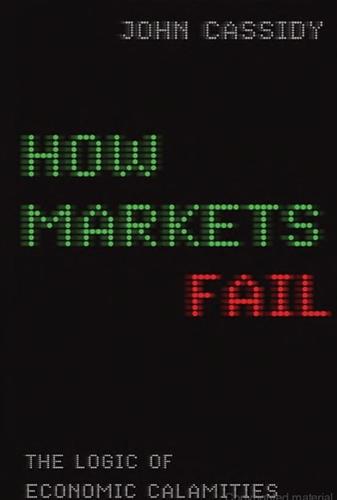
How Markets Fail: The Logic of Economic Calamities
by
John Cassidy
Published 10 Nov 2009
In what was perhaps a poke at the efficient market hypothesis, Minsky described his thesis that capitalist economies inevitably progress from conservative finance to reckless speculation as the “financial instability hypothesis.” Minsky described it as an interpretation of Keynes’s General Theory, and he also credited the Austrian economist Joseph Schumpeter for influencing his views. “The first theorem of the financial instability hypothesis is that the economy has financing regimes under which it is stable, and financing regimes in which it is unstable,” he explained in 1992. “The second theorem of the financial instability hypothesis is that over periods of prolonged prosperity, the economy transits from financial relations that make for a stable system to financial relations that make for an unstable system.”
…
.”: Ibid., 261. 209 “a spiral of declining investment . . .”: Ibid., 239. 209 “The first theorem . . .”: Hyman Minsky, “The Financial Instability Hypothesis,” Working Paper no. 74, Jerome Levy Economics Institute of Bard College, May 1992, 7–8. 210 “In a world with capitalist . . .”: Minsky, Stabilizing an Unstable Economy, 280. 212 “was part of the process that . . .”: Ibid., 265. 212 “Like all entrepreneurs . . .”: Minsky, “Financial Instability Hypothesis,” 6. 214 “The downside aspect . . .”: Paul Davidson, Financial Markets, Money and the Real World (Cheltenham, UK: Edward Elgar, 2002), 115–16. 215 “For a new era . . .”: Minsky, Stabilizing an Unstable Economy, 6. 216 Sweezy’s introduction to Marxist economics: Paul M.
…
“The second theorem of the financial instability hypothesis is that over periods of prolonged prosperity, the economy transits from financial relations that make for a stable system to financial relations that make for an unstable system.” Although Minsky didn’t state it as such, the financial instability hypothesis is a theory of rational irrationality, with the individually rational actions of banks and other financial firms serving to destabilize the entire system. “In a world with capitalist finance it is simply not true that the pursuit by each unit of its own interest will lead an economy to equilibrium,” Minsky wrote. “The self-interest of bankers, levered investors, and investment producers can lead the economy to inflationary expansions and unemployment-creating contractions.
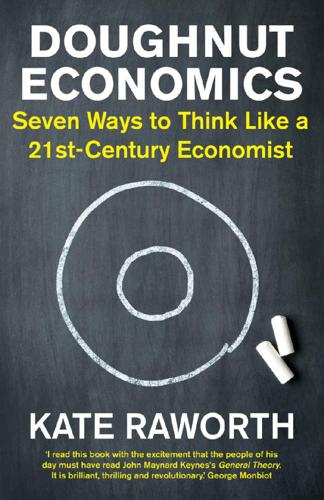
Doughnut Economics: Seven Ways to Think Like a 21st-Century Economist
by
Kate Raworth
Published 22 Mar 2017
Page numbers in italics denote illustrations A Aalborg, Denmark, 290 Abbott, Anthony ‘Tony’, 31 ABCD group, 148 Abramovitz, Moses, 262 absolute decoupling, 260–61 Acemoglu, Daron, 86 advertising, 58, 106–7, 112, 281 Agbodjinou, Sénamé, 231 agriculture, 5, 46, 72–3, 148, 155, 178, 181, 183 Alaska, 9 Alaska Permanent Fund, 194 Alperovitz, Gar, 177 alternative enterprise designs, 190–91 altruism, 100, 104 Amazon, 192, 196, 276 Amazon rainforest, 105–6, 253 American Economic Association, 3 American Enterprise Institute, 67 American Tobacco Corporation, 107 Andes, 54 animal spirits, 110 Anthropocene epoch, 48, 253 anthropocentrism, 115 Apertuso, 230 Apple, 85, 192 Archer Daniels Midland (ADM), 148 Arendt, Hannah, 115–16 Argentina, 55, 274 Aristotle, 32, 272 Arrow, Kenneth, 134 Articles of Association and Memoranda, 233 Arusha, Tanzania, 202 Asia Wage Floor Alliance, 177 Asian financial crisis (1997), 90 Asknature.org, 232 Athens, 57 austerity, 163 Australia, 31, 103, 177, 180, 211, 224–6, 255, 260 Austria, 263, 274 availability bias, 112 AXIOM, 230 Axtell, Robert, 150 Ayres, Robert, 263 B B Corp, 241 Babylon, 13 Baker, Josephine, 157 balancing feedback loops, 138–41, 155, 271 Ballmer, Steve, 231 Bangla Pesa, 185–6, 293 Bangladesh, 10, 226 Bank for International Settlements, 256 Bank of America, 149 Bank of England, 145, 147, 256 banking, see under finance Barnes, Peter, 201 Barroso, José Manuel, 41 Bartlett, Albert Allen ‘Al’, 247 basic income, 177, 194, 199–201 basic personal values, 107–9 Basle, Switzerland, 80 Bauwens, Michel, 197 Beckerman, Wilfred, 258 Beckham, David, 171 Beech-Nut Packing Company, 107 behavioural economics, 11, 111–14 behavioural psychology, 103, 128 Beinhocker, Eric, 158 Belgium, 236, 252 Bentham, Jeremy, 98 Benyus, Janine, 116, 218, 223–4, 227, 232, 237, 241 Berger, John, 12, 281 Berlin Wall, 141 Bermuda, 277 Bernanke, Ben, 146 Bernays, Edward, 107, 112, 281–3 Bhopal gas disaster (1984), 9 Bible, 19, 114, 151 Big Bang (1986), 87 billionaires, 171, 200, 289 biodiversity, 10, 46, 48–9, 52, 85, 115, 155, 208, 210, 242, 299 as common pool resource, 201 and land conversion, 49 and inequality, 172 and reforesting, 50 biomass, 73, 118, 210, 212, 221 biomimicry, 116, 218, 227, 229 bioplastic, 224, 293 Birmingham, West Midlands, 10 Black, Fischer, 100–101 Blair, Anthony ‘Tony’, 171 Blockchain, 187, 192 blood donation, 104, 118 Body Shop, The, 232–4 Bogotá, Colombia, 119 Bolivia, 54 Boston, Massachusetts, 3 Bowen, Alex, 261 Bowles, Sam, 104 Box, George, 22 Boyce, James, 209 Brasselberg, Jacob, 187 Brazil, 124, 226, 281, 290 bread riots, 89 Brisbane, Australia, 31 Brown, Gordon, 146 Brynjolfsson, Erik, 193, 194, 258 Buddhism, 54 buen vivir, 54 Bullitt Center, Seattle, 217 Bunge, 148 Burkina Faso, 89 Burmark, Lynell, 13 business, 36, 43, 68, 88–9 automation, 191–5, 237, 258, 278 boom and bust, 246 and circular economy, 212, 215–19, 220, 224, 227–30, 232–4, 292 and complementary currencies, 184–5, 292 and core economy, 80 and creative destruction, 142 and feedback loops, 148 and finance, 183, 184 and green growth, 261, 265, 269 and households, 63, 68 living metrics, 241 and market, 68, 88 micro-businesses, 9 and neoliberalism, 67, 87 ownership, 190–91 and political funding, 91–2, 171–2 and taxation, 23, 276–7 workers’ rights, 88, 91, 269 butterfly economy, 220–42 C C–ROADS (Climate Rapid Overview and Decision Support), 153 C40 network, 280 calculating man, 98 California, United States, 213, 224, 293 Cambodia, 254 Cameron, David, 41 Canada, 196, 255, 260, 281, 282 cancer, 124, 159, 196 Capital Institute, 236 carbon emissions, 49–50, 59, 75 and decoupling, 260, 266 and forests, 50, 52 and inequality, 58 reduction of, 184, 201, 213, 216–18, 223–7, 239–41, 260, 266 stock–flow dynamics, 152–4 taxation, 201, 213 Cargill, 148 Carney, Mark, 256 Caterpillar, 228 Catholic Church, 15, 19 Cato Institute, 67 Celts, 54 central banks, 6, 87, 145, 146, 147, 183, 184, 256 Chang, Ha-Joon, 82, 86, 90 Chaplin, Charlie, 157 Chiapas, Mexico, 121–2 Chicago Board Options Exchange (CBOE), 100–101 Chicago School, 34, 99 Chile, 7, 42 China, 1, 7, 48, 154, 289–90 automation, 193 billionaires, 200, 289 greenhouse gas emissions, 153 inequality, 164 Lake Erhai doughnut analysis, 56 open-source design, 196 poverty reduction, 151, 198 renewable energy, 239 tiered pricing, 213 Chinese Development Bank, 239 chrematistics, 32, 273 Christianity, 15, 19, 114, 151 cigarettes, 107, 124 circular economy, 220–42, 257 Circular Flow diagram, 19–20, 28, 62–7, 64, 70, 78, 87, 91, 92, 93, 262 Citigroup, 149 Citizen Reaction Study, 102 civil rights movement, 77 Cleveland, Ohio, 190 climate change, 1, 3, 5, 29, 41, 45–53, 63, 74, 75–6, 91, 141, 144, 201 circular economy, 239, 241–2 dynamics of, 152–5 and G20, 31 and GDP growth, 255, 256, 260, 280 and heuristics, 114 and human rights, 10 and values, 126 climate positive cities, 239 closed systems, 74 coffee, 221 cognitive bias, 112–14 Colander, David, 137 Colombia, 119 common-pool resources, 82–3, 181, 201–2 commons, 69, 82–4, 287 collaborative, 78, 83, 191, 195, 196, 264, 292 cultural, 83 digital, 82, 83, 192, 197, 281 and distribution, 164, 180, 181–2, 205, 267 Embedded Economy, 71, 73, 77–8, 82–4, 85, 92 knowledge, 197, 201–2, 204, 229, 231, 292 commons and money creation, see complementary currencies natural, 82, 83, 180, 181–2, 201, 265 and regeneration, 229, 242, 267, 292 and state, 85, 93, 197, 237 and systems, 160 tragedy of, 28, 62, 69, 82, 181 triumph of, 83 and values, 106, 108 Commons Trusts, 201 complementary currencies, 158, 182–8, 236, 292 complex systems, 28, 129–62 complexity science, 136–7 Consumer Reaction Study, 102 consumerism, 58, 102, 121, 280–84 cooking, 45, 80, 186 Coote, Anna, 278 Copenhagen, Denmark, 124 Copernicus, Nicolaus, 14–15 copyright, 195, 197, 204 core economy, 79–80 Corporate To Do List, 215–19 Costa Rica, 172 Council of Economic Advisers, US, 6, 37 Cox, Jo, 117 cradle to cradle, 224 creative destruction, 142 Cree, 282 Crompton, Tom, 125–6 cross-border flows, 89–90 crowdsourcing, 204 cuckoos, 32, 35, 36, 38, 40, 54, 60, 159, 244, 256, 271 currencies, 182–8, 236, 274, 292 D da Vinci, Leonardo, 13, 94–5 Dallas, Texas, 120 Daly, Herman, 74, 143, 271 Danish Nudging Network, 124 Darwin, Charles, 14 Debreu, Gerard, 134 debt, 37, 146–7, 172–3, 182–5, 247, 255, 269 decoupling, 193, 210, 258–62, 273 defeat device software, 216 deforestation, 49–50, 74, 208, 210 degenerative linear economy, 211–19, 222–3, 237 degrowth, 244 DeMartino, George, 161 democracy, 77, 171–2, 258 demurrage, 274 Denmark, 180, 275, 290 deregulation, 82, 87, 269 derivatives, 100–101, 149 Devas, Charles Stanton, 97 Dey, Suchitra, 178 Diamond, Jared, 154 diarrhoea, 5 differential calculus, 131, 132 digital revolution, 191–2, 264 diversify–select–amplify, 158 double spiral, 54 Doughnut model, 10–11, 11, 23–5, 44, 51 and aspiration, 58–9, 280–84 big picture, 28, 42, 61–93 distribution, 29, 52, 57, 58, 76, 93, 158, 163–205 ecological ceiling, 10, 11, 44, 45, 46, 49, 51, 218, 254, 295, 298 goal, 25–8, 31–60 and governance, 57, 59 growth agnosticism, 29–30, 243–85 human nature, 28–9, 94–128 and population, 57–8 regeneration, 29, 158, 206–42 social foundation, 10, 11, 44, 45, 49, 51, 58, 77, 174, 200, 254, 295–6 systems, 28, 129–62 and technology, 57, 59 Douglas, Margaret, 78–9 Dreyfus, Louis, 148 ‘Dumb and Dumber in Macroeconomics’ (Solow), 135 Durban, South Africa, 214 E Earning by Learning, 120 Earth-system science, 44–53, 115, 216, 288, 298 Easter Island, 154 Easterlin, Richard, 265–6 eBay, 105, 192 eco-literacy, 115 ecological ceiling, 10, 11, 44, 45, 46, 49, 51, 218, 254, 295, 298 Ecological Performance Standards, 241 Econ 101 course, 8, 77 Economics (Lewis), 114 Economics (Samuelson), 19–20, 63–7, 70, 74, 78, 86, 91, 92, 93, 262 Economy for the Common Good, 241 ecosystem services, 7, 116, 269 Ecuador, 54 education, 9, 43, 45, 50–52, 85, 169–70, 176, 200, 249, 279 economic, 8, 11, 18, 22, 24, 36, 287–93 environmental, 115, 239–40 girls’, 57, 124, 178, 198 online, 83, 197, 264, 290 pricing, 118–19 efficient market hypothesis, 28, 62, 68, 87 Egypt, 48, 89 Eisenstein, Charles, 116 electricity, 9, 45, 236, 240 and Bangla Pesa, 186 cars, 231 Ethereum, 187–8 and MONIAC, 75, 262 pricing, 118, 213 see also renewable energy Elizabeth II, Queen of the United Kingdom, 145 Ellen MacArthur Foundation, 220 Embedded Economy, 71–93, 263 business, 88–9 commons, 82–4 Earth, 72–6 economy, 77–8 finance, 86–8 household, 78–81 market, 81–2 power, 91–92 society, 76–7 state, 84–6 trade, 89–90 employment, 36, 37, 51, 142, 176 automation, 191–5, 237, 258, 278 labour ownership, 188–91 workers’ rights, 88, 90, 269 Empty World, 74 Engels, Friedrich, 88 environment and circular economy, 220–42, 257 conservation, 121–2 and degenerative linear economy, 211–19, 222–3 degradation, 5, 9, 10, 29, 44–53, 74, 154, 172, 196, 206–42 education on, 115, 239–40 externalities, 152 fair share, 216–17 and finance, 234–7 generosity, 218–19, 223–7 green growth, 41, 210, 243–85 nudging, 123–5 taxation and quotas, 213–14, 215 zero impact, 217–18, 238, 241 Environmental Dashboard, 240–41 environmental economics, 7, 11, 114–16 Environmental Kuznets Curve, 207–11, 241 environmental space, 54 Epstein, Joshua, 150 equilibrium theory, 134–62 Ethereum, 187–8 ethics, 160–62 Ethiopia, 9, 226, 254 Etsy, 105 Euclid, 13, 15 European Central Bank, 145, 275 European Commission, 41 European Union (EU), 92, 153, 210, 222, 255, 258 Evergreen Cooperatives, 190 Evergreen Direct Investing (EDI), 273 exogenous shocks, 141 exponential growth, 39, 246–85 externalities, 143, 152, 213 Exxon Valdez oil spill (1989), 9 F Facebook, 192 fair share, 216–17 Fama, Eugene, 68, 87 fascism, 234, 277 Federal Reserve, US, 87, 145, 146, 271, 282 feedback loops, 138–41, 143, 148, 155, 250, 271 feminist economics, 11, 78–81, 160 Ferguson, Thomas, 91–2 finance animal spirits, 110 bank runs, 139 Black–Scholes model, 100–101 boom and bust, 28–9, 110, 144–7 and Circular Flow, 63–4, 87 and complex systems, 134, 138, 139, 140, 141, 145–7 cross-border flows, 89 deregulation, 87 derivatives, 100–101, 149 and distribution, 169, 170, 173, 182–4, 198–9, 201 and efficient market hypothesis, 63, 68 and Embedded Economy, 71, 86–8 and financial-instability hypothesis, 87, 146 and GDP growth, 38 and media, 7–8 mobile banking, 199–200 and money creation, 87, 182–5 and regeneration, 227, 229, 234–7 in service to life, 159, 234–7 stakeholder finance, 190 and sustainability, 216, 235–6, 239 financial crisis (2008), 1–4, 5, 40, 63, 86, 141, 144, 278, 290 and efficient market hypothesis, 87 and equilibrium theory, 134, 145 and financial-instability hypothesis, 87 and inequality, 90, 170, 172, 175 and money creation, 182 and worker’s rights, 278 financial flows, 89 Financial Times, 183, 266, 289 financial-instability hypothesis, 87, 146 First Green Bank, 236 First World War (1914–18), 166, 170 Fisher, Irving, 183 fluid values, 102, 106–9 food, 3, 43, 45, 50, 54, 58, 59, 89, 198 food banks, 165 food price crisis (2007–8), 89, 90, 180 Ford, 277–8 foreign direct investment, 89 forest conservation, 121–2 fossil fuels, 59, 73, 75, 92, 212, 260, 263 Foundations of Economic Analysis (Samuelson), 17–18 Foxconn, 193 framing, 22–3 France, 43, 165, 196, 238, 254, 256, 281, 290 Frank, Robert, 100 free market, 33, 37, 67, 68, 70, 81–2, 86, 90 free open-source hardware (FOSH), 196–7 free open-source software (FOSS), 196 free trade, 70, 90 Freeman, Ralph, 18–19 freshwater cycle, 48–9 Freud, Sigmund, 107, 281 Friedman, Benjamin, 258 Friedman, Milton, 34, 62, 66–9, 84–5, 88, 99, 183, 232 Friends of the Earth, 54 Full World, 75 Fuller, Buckminster, 4 Fullerton, John, 234–6, 273 G G20, 31, 56, 276, 279–80 G77, 55 Gal, Orit, 141 Gandhi, Mohandas, 42, 293 Gangnam Style, 145 Gardens of Democracy, The (Liu & Hanauer), 158 gender equality, 45, 51–2, 57, 78–9, 85, 88, 118–19, 124, 171, 198 generosity, 218–19, 223–9 geometry, 13, 15 George, Henry, 149, 179 Georgescu-Roegen, Nicholas, 252 geothermal energy, 221 Gerhardt, Sue, 283 Germany, 2, 41, 100, 118, 165, 189, 211, 213, 254, 256, 260, 274 Gessel, Silvio, 274 Ghent, Belgium, 236 Gift Relationship, The (Titmuss), 118–19 Gigerenzer, Gerd, 112–14 Gintis, Herb, 104 GiveDirectly, 200 Glass–Steagall Act (1933), 87 Glennon, Roger, 214 Global Alliance for Tax Justice, 277 global material footprints, 210–11 Global Village Construction Set, 196 globalisation, 89 Goerner, Sally, 175–6 Goffmann, Erving, 22 Going for Growth, 255 golden rule, 91 Goldman Sachs, 149, 170 Gómez-Baggethun, Erik, 122 Goodall, Chris, 211 Goodwin, Neva, 79 Goody, Jade, 124 Google, 192 Gore, Albert ‘Al’, 172 Gorgons, 244, 256, 257, 266 graffiti, 15, 25, 287 Great Acceleration, 46, 253–4 Great Depression (1929–39), 37, 70, 170, 173, 183, 275, 277, 278 Great Moderation, 146 Greece, Ancient, 4, 13, 32, 48, 54, 56–7, 160, 244 green growth, 41, 210, 243–85 Greenham, Tony, 185 greenhouse gas emissions, 31, 46, 50, 75–6, 141, 152–4 and decoupling, 260, 266 and Environmental Kuznets Curve, 208, 210 and forests, 50, 52 and G20, 31 and inequality, 58 reduction of, 184, 201–2, 213, 216–18, 223–7, 239–41, 256, 259–60, 266, 298 stock–flow dynamics, 152–4 and taxation, 201, 213 Greenland, 141, 154 Greenpeace, 9 Greenspan, Alan, 87 Greenwich, London, 290 Grenoble, France, 281 Griffiths, Brian, 170 gross domestic product (GDP), 25, 31–2, 35–43, 57, 60, 84, 164 as cuckoo, 32, 35, 36, 38, 40, 54, 60, 159, 244, 256, 271 and Environmental Kuznets Curve, 207–11 and exponential growth, 39, 53, 246–85 and growth agnosticism, 29–30, 240, 243–85 and inequality, 173 and Kuznets Curve, 167, 173, 188–9 gross national product (GNP), 36–40 Gross World Product, 248 Grossman, Gene, 207–8, 210 ‘grow now, clean up later’, 207 Guatemala, 196 H Haifa, Israel, 120 Haldane, Andrew, 146 Han Dynasty, 154 Hanauer, Nick, 158 Hansen, Pelle, 124 Happy Planet Index, 280 Hardin, Garrett, 69, 83, 181 Harvard University, 2, 271, 290 von Hayek, Friedrich, 7–8, 62, 66, 67, 143, 156, 158 healthcare, 43, 50, 57, 85, 123, 125, 170, 176, 200, 269, 279 Heilbroner, Robert, 53 Henry VIII, King of England and Ireland, 180 Hepburn, Cameron, 261 Herbert Simon, 111 heuristics, 113–14, 118, 123 high-income countries growth, 30, 244–5, 254–72, 282 inequality, 165, 168, 169, 171 labour, 177, 188–9, 278 overseas development assistance (ODA), 198–9 resource intensive lifestyles, 46, 210–11 trade, 90 Hippocrates, 160 History of Economic Analysis (Schumpeter), 21 HIV/AIDS, 123 Holocene epoch, 46–8, 75, 115, 253 Homo economicus, 94–103, 109, 127–8 Homo sapiens, 38, 104, 130 Hong Kong, 180 household, 78 housing, 45, 59, 176, 182–3, 269 Howe, Geoffrey, 67 Hudson, Michael, 183 Human Development Index, 9, 279 human nature, 28 human rights, 10, 25, 45, 49, 50, 95, 214, 233 humanistic economics, 42 hydropower, 118, 260, 263 I Illinois, United States, 179–80 Imago Mundi, 13 immigration, 82, 199, 236, 266 In Defense of Economic Growth (Beckerman), 258 Inclusive Wealth Index, 280 income, 51, 79–80, 82, 88, 176–8, 188–91, 194, 199–201 India, 2, 9, 10, 42, 124, 164, 178, 196, 206–7, 242, 290 Indonesia, 90, 105–6, 164, 168, 200 Indus Valley civilisation, 48 inequality, 1, 5, 25, 41, 63, 81, 88, 91, 148–52, 209 and consumerism, 111 and democracy, 171 and digital revolution, 191–5 and distribution, 163–205 and environmental degradation, 172 and GDP growth, 173 and greenhouse gas emissions, 58 and intellectual property, 195–8 and Kuznets Curve, 29, 166–70, 173–4 and labour ownership, 188–91 and land ownership, 178–82 and money creation, 182–8 and social welfare, 171 Success to the Successful, 148, 149, 151, 166 inflation, 36, 248, 256, 275 insect pollination services, 7 Institute of Economic Affairs, 67 institutional economics, 11 intellectual property rights, 195–8, 204 interest, 36, 177, 182, 184, 275–6 Intergovernmental Panel on Climate Change, 25 International Monetary Fund (IMF), 170, 172, 173, 183, 255, 258, 271 Internet, 83–4, 89, 105, 192, 202, 264 Ireland, 277 Iroquois Onondaga Nation, 116 Israel, 100, 103, 120 Italy, 165, 196, 254 J Jackson, Tim, 58 Jakubowski, Marcin, 196 Jalisco, Mexico, 217 Japan, 168, 180, 211, 222, 254, 256, 263, 275 Jevons, William Stanley, 16, 97–8, 131, 132, 137, 142 John Lewis Partnership, 190 Johnson, Lyndon Baines, 37 Johnson, Mark, 38 Johnson, Todd, 191 JPMorgan Chase, 149, 234 K Kahneman, Daniel, 111 Kamkwamba, William, 202, 204 Kasser, Tim, 125–6 Keen, Steve, 146, 147 Kelly, Marjorie, 190–91, 233 Kennedy, John Fitzgerald, 37, 250 Kennedy, Paul, 279 Kenya, 118, 123, 180, 185–6, 199–200, 226, 292 Keynes, John Maynard, 7–8, 22, 66, 69, 134, 184, 251, 277–8, 284, 288 Kick It Over movement, 3, 289 Kingston, London, 290 Knight, Frank, 66, 99 knowledge commons, 202–4, 229, 292 Kokstad, South Africa, 56 Kondratieff waves, 246 Korzybski, Alfred, 22 Krueger, Alan, 207–8, 210 Kuhn, Thomas, 22 Kumhof, Michael, 172 Kuwait, 255 Kuznets, Simon, 29, 36, 39–40, 166–70, 173, 174, 175, 204, 207 KwaZulu Natal, South Africa, 56 L labour ownership, 188–91 Lake Erhai, Yunnan, 56 Lakoff, George, 23, 38, 276 Lamelara, Indonesia, 105–6 land conversion, 49, 52, 299 land ownership, 178–82 land-value tax, 73, 149, 180 Landesa, 178 Landlord’s Game, The, 149 law of demand, 16 laws of motion, 13, 16–17, 34, 129, 131 Lehman Brothers, 141 Leopold, Aldo, 115 Lesotho, 118, 199 leverage points, 159 Lewis, Fay, 178 Lewis, Justin, 102 Lewis, William Arthur, 114, 167 Lietaer, Bernard, 175, 236 Limits to Growth, 40, 154, 258 Linux, 231 Liu, Eric, 158 living metrics, 240–42 living purpose, 233–4 Lomé, Togo, 231 London School of Economics (LSE), 2, 34, 65, 290 London Underground, 12 loss aversion, 112 low-income countries, 90, 164–5, 168, 173, 180, 199, 201, 209, 226, 254, 259 Lucas, Robert, 171 Lula da Silva, Luiz Inácio, 124 Luxembourg, 277 Lyle, John Tillman, 214 Lyons, Oren, 116 M M–PESA, 199–200 MacDonald, Tim, 273 Machiguenga, 105–6 MacKenzie, Donald, 101 macroeconomics, 36, 62–6, 76, 80, 134–5, 145, 147, 150, 244, 280 Magie, Elizabeth, 149, 153 Malala effect, 124 malaria, 5 Malawi, 118, 202, 204 Malaysia, 168 Mali, Taylor, 243 Malthus, Thomas, 252 Mamsera Rural Cooperative, 190 Manhattan, New York, 9, 41 Mani, Muthukumara, 206 Manitoba, 282 Mankiw, Gregory, 2, 34 Mannheim, Karl, 22 Maoris, 54 market, 81–2 and business, 88 circular flow, 64 and commons, 83, 93, 181, 200–201 efficiency of, 28, 62, 68, 87, 148, 181 and equilibrium theory, 131–5, 137, 143–7, 155, 156 free market, 33, 37, 67–70, 90, 208 and households, 63, 69, 78, 79 and maxi-max rule, 161 and pricing, 117–23, 131, 160 and rational economic man, 96, 100–101, 103, 104 and reciprocity, 105, 106 reflexivity of, 144–7 and society, 69–70 and state, 84–6, 200, 281 Marshall, Alfred, 17, 98, 133, 165, 253, 282 Marx, Karl, 88, 142, 165, 272 Massachusetts Institute of Technology (MIT), 17–20, 152–5 massive open online courses (MOOCs), 290 Matthew Effect, 151 Max-Neef, Manfred, 42 maxi-max rule, 161 maximum wage, 177 Maya civilisation, 48, 154 Mazzucato, Mariana, 85, 195, 238 McAfee, Andrew, 194, 258 McDonough, William, 217 Meadows, Donella, 40, 141, 159, 271, 292 Medusa, 244, 257, 266 Merkel, Angela, 41 Messerli, Elspeth, 187 Metaphors We Live By (Lakoff & Johnson), 38 Mexico, 121–2, 217 Michaels, Flora S., 6 micro-businesses, 9, 173, 178 microeconomics, 132–4 microgrids, 187–8 Micronesia, 153 Microsoft, 231 middle class, 6, 46, 58 middle-income countries, 90, 164, 168, 173, 180, 226, 254 migration, 82, 89–90, 166, 195, 199, 236, 266, 286 Milanovic, Branko, 171 Mill, John Stuart, 33–4, 73, 97, 250, 251, 283, 284, 288 Millo, Yuval, 101 minimum wage, 82, 88, 176 Minsky, Hyman, 87, 146 Mises, Ludwig von, 66 mission zero, 217 mobile banking, 199–200 mobile phones, 222 Model T revolution, 277–8 Moldova, 199 Mombasa, Kenya, 185–6 Mona Lisa (da Vinci), 94 money creation, 87, 164, 177, 182–8, 205 MONIAC (Monetary National Income Analogue Computer), 64–5, 75, 142, 262 Monoculture (Michaels), 6 Monopoly, 149 Mont Pelerin Society, 67, 93 Moral Consequences of Economic Growth, The (Friedman), 258 moral vacancy, 41 Morgan, Mary, 99 Morogoro, Tanzania, 121 Moyo, Dambisa, 258 Muirhead, Sam, 230, 231 MultiCapital Scorecard, 241 Murphy, David, 264 Murphy, Richard, 185 musical tastes, 110 Myriad Genetics, 196 N national basic income, 177 Native Americans, 115, 116, 282 natural capital, 7, 116, 269 Natural Economic Order, The (Gessel), 274 Nedbank, 216 negative externalities, 213 negative interest rates, 275–6 neoclassical economics, 134, 135 neoliberalism, 7, 62–3, 67–70, 81, 83, 84, 88, 93, 143, 170, 176 Nepal, 181, 199 Nestlé, 217 Netherlands, 211, 235, 224, 226, 238, 277 networks, 110–11, 117, 118, 123, 124–6, 174–6 neuroscience, 12–13 New Deal, 37 New Economics Foundation, 278, 283 New Year’s Day, 124 New York, United States, 9, 41, 55 Newlight Technologies, 224, 226, 293 Newton, Isaac, 13, 15–17, 32–3, 95, 97, 129, 131, 135–7, 142, 145, 162 Nicaragua, 196 Nigeria, 164 nitrogen, 49, 52, 212–13, 216, 218, 221, 226, 298 ‘no pain, no gain’, 163, 167, 173, 204, 209 Nobel Prize, 6–7, 43, 83, 101, 167 Norway, 281 nudging, 112, 113, 114, 123–6 O Obama, Barack, 41, 92 Oberlin, Ohio, 239, 240–41 Occupy movement, 40, 91 ocean acidification, 45, 46, 52, 155, 242, 298 Ohio, United States, 190, 239 Okun, Arthur, 37 onwards and upwards, 53 Open Building Institute, 196 Open Source Circular Economy (OSCE), 229–32 open systems, 74 open-source design, 158, 196–8, 265 open-source licensing, 204 Organisation for Economic Co-operation and Development (OECD), 38, 210, 255–6, 258 Origin of Species, The (Darwin), 14 Ormerod, Paul, 110, 111 Orr, David, 239 Ostrom, Elinor, 83, 84, 158, 160, 181–2 Ostry, Jonathan, 173 OSVehicle, 231 overseas development assistance (ODA), 198–200 ownership of wealth, 177–82 Oxfam, 9, 44 Oxford University, 1, 36 ozone layer, 9, 50, 115 P Pachamama, 54, 55 Pakistan, 124 Pareto, Vilfredo, 165–6, 175 Paris, France, 290 Park 20|20, Netherlands, 224, 226 Parker Brothers, 149 Patagonia, 56 patents, 195–6, 197, 204 patient capital, 235 Paypal, 192 Pearce, Joshua, 197, 203–4 peer-to-peer networks, 187, 192, 198, 203, 292 People’s QE, 184–5 Perseus, 244 Persia, 13 Peru, 2, 105–6 Phillips, Adam, 283 Phillips, William ‘Bill’, 64–6, 75, 142, 262 phosphorus, 49, 52, 212–13, 218, 298 Physiocrats, 73 Pickett, Kate, 171 pictures, 12–25 Piketty, Thomas, 169 Playfair, William, 16 Poincaré, Henri, 109, 127–8 Polanyi, Karl, 82, 272 political economy, 33–4, 42 political funding, 91–2, 171–2 political voice, 43, 45, 51–2, 77, 117 pollution, 29, 45, 52, 85, 143, 155, 206–17, 226, 238, 242, 254, 298 population, 5, 46, 57, 155, 199, 250, 252, 254 Portugal, 211 post-growth society, 250 poverty, 5, 9, 37, 41, 50, 88, 118, 148, 151 emotional, 283 and inequality, 164–5, 168–9, 178 and overseas development assistance (ODA), 198–200 and taxation, 277 power, 91–92 pre-analytic vision, 21–2 prescription medicines, 123 price-takers, 132 prices, 81, 118–23, 131, 160 Principles of Economics (Mankiw), 34 Principles of Economics (Marshall), 17, 98 Principles of Political Economy (Mill), 288 ProComposto, 226 Propaganda (Bernays), 107 public relations, 107, 281 public spending v. investment, 276 public–private patents, 195 Putnam, Robert, 76–7 Q quantitative easing (QE), 184–5 Quebec, 281 Quesnay, François, 16, 73 R Rabot, Ghent, 236 Rancière, Romain, 172 rating and review systems, 105 rational economic man, 94–103, 109, 111, 112, 126, 282 Reagan, Ronald, 67 reciprocity, 103–6, 117, 118, 123 reflexivity of markets, 144 reinforcing feedback loops, 138–41, 148, 250, 271 relative decoupling, 259 renewable energy biomass energy, 118, 221 and circular economy, 221, 224, 226, 235, 238–9, 274 and commons, 83, 85, 185, 187–8, 192, 203, 264 geothermal energy, 221 and green growth, 257, 260, 263, 264, 267 hydropower, 118, 260, 263 pricing, 118 solar energy, see solar energy wave energy, 221 wind energy, 75, 118, 196, 202–3, 221, 233, 239, 260, 263 rentier sector, 180, 183, 184 reregulation, 82, 87, 269 resource flows, 175 resource-intensive lifestyles, 46 Rethinking Economics, 289 Reynebeau, Guy, 237 Ricardo, David, 67, 68, 73, 89, 250 Richardson, Katherine, 53 Rifkin, Jeremy, 83, 264–5 Rise and Fall of the Great Powers, The (Kennedy), 279 risk, 112, 113–14 Robbins, Lionel, 34 Robinson, James, 86 Robinson, Joan, 142 robots, 191–5, 237, 258, 278 Rockefeller Foundation, 135 Rockford, Illinois, 179–80 Rockström, Johan, 48, 55 Roddick, Anita, 232–4 Rogoff, Kenneth, 271, 280 Roman Catholic Church, 15, 19 Rombo, Tanzania, 190 Rome, Ancient, 13, 48, 154 Romney, Mitt, 92 Roosevelt, Franklin Delano, 37 rooted membership, 190 Rostow, Walt, 248–50, 254, 257, 267–70, 284 Ruddick, Will, 185 rule of thumb, 113–14 Ruskin, John, 42, 223 Russia, 200 rust belt, 90, 239 S S curve, 251–6 Sainsbury’s, 56 Samuelson, Paul, 17–21, 24–5, 38, 62–7, 70, 74, 84, 91, 92, 93, 262, 290–91 Sandel, Michael, 41, 120–21 Sanergy, 226 sanitation, 5, 51, 59 Santa Fe, California, 213 Santinagar, West Bengal, 178 São Paolo, Brazil, 281 Sarkozy, Nicolas, 43 Saumweder, Philipp, 226 Scharmer, Otto, 115 Scholes, Myron, 100–101 Schumacher, Ernst Friedrich, 42, 142 Schumpeter, Joseph, 21 Schwartz, Shalom, 107–9 Schwarzenegger, Arnold, 163, 167, 204 ‘Science and Complexity’ (Weaver), 136 Scotland, 57 Seaman, David, 187 Seattle, Washington, 217 second machine age, 258 Second World War (1939–45), 18, 37, 70, 170 secular stagnation, 256 self-interest, 28, 68, 96–7, 99–100, 102–3 Selfish Society, The (Gerhardt), 283 Sen, Amartya, 43 Shakespeare, William, 61–3, 67, 93 shale gas, 264, 269 Shang Dynasty, 48 shareholders, 82, 88, 189, 191, 227, 234, 273, 292 sharing economy, 264 Sheraton Hotel, Boston, 3 Siegen, Germany, 290 Silicon Valley, 231 Simon, Julian, 70 Sinclair, Upton, 255 Sismondi, Jean, 42 slavery, 33, 77, 161 Slovenia, 177 Small Is Beautiful (Schumacher), 42 smart phones, 85 Smith, Adam, 33, 57, 67, 68, 73, 78–9, 81, 96–7, 103–4, 128, 133, 160, 181, 250 social capital, 76–7, 122, 125, 172 social contract, 120, 125 social foundation, 10, 11, 44, 45, 49, 51, 58, 77, 174, 200, 254, 295–6 social media, 83, 281 Social Progress Index, 280 social pyramid, 166 society, 76–7 solar energy, 59, 75, 111, 118, 187–8, 190 circular economy, 221, 222, 223, 224, 226–7, 239 commons, 203 zero-energy buildings, 217 zero-marginal-cost revolution, 84 Solow, Robert, 135, 150, 262–3 Soros, George, 144 South Africa, 56, 177, 214, 216 South Korea, 90, 168 South Sea Bubble (1720), 145 Soviet Union (1922–91), 37, 67, 161, 279 Spain, 211, 238, 256 Spirit Level, The (Wilkinson & Pickett), 171 Sraffa, Piero, 148 St Gallen, Switzerland, 186 Stages of Economic Growth, The (Rostow), 248–50, 254 stakeholder finance, 190 Standish, Russell, 147 state, 28, 33, 69–70, 78, 82, 160, 176, 180, 182–4, 188 and commons, 85, 93, 197, 237 and market, 84–6, 200, 281 partner state, 197, 237–9 and robots, 195 stationary state, 250 Steffen, Will, 46, 48 Sterman, John, 66, 143, 152–4 Steuart, James, 33 Stiglitz, Joseph, 43, 111, 196 stocks and flows, 138–41, 143, 144, 152 sub-prime mortgages, 141 Success to the Successful, 148, 149, 151, 166 Sugarscape, 150–51 Summers, Larry, 256 Sumner, Andy, 165 Sundrop Farms, 224–6 Sunstein, Cass, 112 supply and demand, 28, 132–6, 143, 253 supply chains, 10 Sweden, 6, 255, 275, 281 swishing, 264 Switzerland, 42, 66, 80, 131, 186–7, 275 T Tableau économique (Quesnay), 16 tabula rasa, 20, 25, 63, 291 takarangi, 54 Tanzania, 121, 190, 202 tar sands, 264, 269 taxation, 78, 111, 165, 170, 176, 177, 237–8, 276–9 annual wealth tax, 200 environment, 213–14, 215 global carbon tax, 201 global financial transactions tax, 201, 235 land-value tax, 73, 149, 180 non-renewable resources, 193, 237–8, 278–9 People’s QE, 185 tax relief v. tax justice, 23, 276–7 TED (Technology, Entertainment, Design), 202, 258 Tempest, The (Shakespeare), 61, 63, 93 Texas, United States, 120 Thailand, 90, 200 Thaler, Richard, 112 Thatcher, Margaret, 67, 69, 76 Theory of Moral Sentiments (Smith), 96 Thompson, Edward Palmer, 180 3D printing, 83–4, 192, 198, 231, 264 thriving-in-balance, 54–7, 62 tiered pricing, 213–14 Tigray, Ethiopia, 226 time banking, 186 Titmuss, Richard, 118–19 Toffler, Alvin, 12, 80 Togo, 231, 292 Torekes, 236–7 Torras, Mariano, 209 Torvalds, Linus, 231 trade, 62, 68–9, 70, 89–90 trade unions, 82, 176, 189 trademarks, 195, 204 Transatlantic Trade and Investment Partnership (TTIP), 92 transport, 59 trickle-down economics, 111, 170 Triodos, 235 Turkey, 200 Tversky, Amos, 111 Twain, Mark, 178–9 U Uganda, 118, 125 Ulanowicz, Robert, 175 Ultimatum Game, 105, 117 unemployment, 36, 37, 276, 277–9 United Kingdom Big Bang (1986), 87 blood donation, 118 carbon dioxide emissions, 260 free trade, 90 global material footprints, 211 money creation, 182 MONIAC (Monetary National Income Analogue Computer), 64–5, 75, 142, 262 New Economics Foundation, 278, 283 poverty, 165, 166 prescription medicines, 123 wages, 188 United Nations, 55, 198, 204, 255, 258, 279 G77 bloc, 55 Human Development Index, 9, 279 Sustainable Development Goals, 24, 45 United States American Economic Association meeting (2015), 3 blood donation, 118 carbon dioxide emissions, 260 Congress, 36 Council of Economic Advisers, 6, 37 Earning by Learning, 120 Econ 101 course, 8, 77 Exxon Valdez oil spill (1989), 9 Federal Reserve, 87, 145, 146, 271, 282 free trade, 90 Glass–Steagall Act (1933), 87 greenhouse gas emissions, 153 global material footprint, 211 gross national product (GNP), 36–40 inequality, 170, 171 land-value tax, 73, 149, 180 political funding, 91–2, 171 poverty, 165, 166 productivity and employment, 193 rust belt, 90, 239 Transatlantic Trade and Investment Partnership (TTIP), 92 wages, 188 universal basic income, 200 University of Berkeley, 116 University of Denver, 160 urbanisation, 58–9 utility, 35, 98, 133 V values, 6, 23, 34, 35, 42, 117, 118, 121, 123–6 altruism, 100, 104 anthropocentric, 115 extrinsic, 115 fluid, 28, 102, 106–9 and networks, 110–11, 117, 118, 123, 124–6 and nudging, 112, 113, 114, 123–6 and pricing, 81, 120–23 Veblen, Thorstein, 82, 109, 111, 142 Venice, 195 verbal framing, 23 Verhulst, Pierre, 252 Victor, Peter, 270 Viner, Jacob, 34 virtuous cycles, 138, 148 visual framing, 23 Vitruvian Man, 13–14 Volkswagen, 215–16 W Wacharia, John, 186 Wall Street, 149, 234, 273 Wallich, Henry, 282 Walras, Léon, 131, 132, 133–4, 137 Ward, Barbara, 53 Warr, Benjamin, 263 water, 5, 9, 45, 46, 51, 54, 59, 79, 213–14 wave energy, 221 Ways of Seeing (Berger), 12, 281 Wealth of Nations, The (Smith), 74, 78, 96, 104 wealth ownership, 177–82 Weaver, Warren, 135–6 weightless economy, 261–2 WEIRD (Western, educated, industrialised, rich, democratic), 103–5, 110, 112, 115, 117, 282 West Bengal, India, 124, 178 West, Darrell, 171–2 wetlands, 7 whale hunting, 106 Wiedmann, Tommy, 210 Wikipedia, 82, 223 Wilkinson, Richard, 171 win–win trade, 62, 68, 89 wind energy, 75, 118, 196, 202–3, 221, 233, 239, 260, 263 Wizard of Oz, The, 241 Woelab, 231, 293 Wolf, Martin, 183, 266 women’s rights, 33, 57, 107, 160, 201 and core economy, 69, 79–81 education, 57, 124, 178, 198 and land ownership, 178 see also gender equality workers’ rights, 88, 91, 269 World 3 model, 154–5 World Bank, 6, 41, 119, 164, 168, 171, 206, 255, 258 World No Tobacco Day, 124 World Trade Organization, 6, 89 worldview, 22, 54, 115 X xenophobia, 266, 277, 286 Xenophon, 4, 32, 56–7, 160 Y Yandle, Bruce, 208 Yang, Yuan, 1–3, 289–90 yin yang, 54 Yousafzai, Malala, 124 YouTube, 192 Yunnan, China, 56 Z Zambia, 10 Zanzibar, 9 Zara, 276 Zeitvorsoge, 186–7 zero environmental impact, 217–18, 238, 241 zero-hour contracts, 88 zero-humans-required production, 192 zero-interest loans, 183 zero-marginal-cost revolution, 84, 191, 264 zero-waste manufacturing, 227 Zinn, Howard, 77 PICTURE ACKNOWLEDGEMENTS Illustrations are reproduced by kind permission of: archive.org
…
Thanks to financial deregulation, said US Federal Reserve Chair Alan Greenspan in 2004, ‘not only have individual financial institutions become less vulnerable to shocks from underlying risk factors, but also the financial system as a whole has become more resilient.’45 Four years later, the financial crash disproved that claim in a fairly decisive way. At the same time, Eugene Fama’s efficient-market hypothesis – that financial markets are inherently efficient – lost credibility and has been countered by Hyman Minsky’s financial-instability hypothesis – that financial markets are inherently volatile – as we will see in Chapter 4. Lastly, far from playing a supporting role to the productive economy, finance has come to dominate it. In many countries, a small financial elite – based in just a handful of banking and financial firms – controls the public good of money creation and profits handsomely from it, while too often destabilising much of the wider economy in the process.
…
In the decade running up to the crash, and oblivious to the build-up of systemic risk, the UK’s chancellor, Gordon Brown, hailed the end of boom and bust,26 while Ben Bernanke, Governor of the Federal Reserve Board welcomed what he called ‘the Great Moderation’.27 After 2008, when the boom went very bust, many started to search for insights in the long-ignored work of the economist Hyman Minsky, especially his 1975 financial-instability hypothesis, which put dynamic analysis at the heart of macroeconomics. Minsky had realised that – counter-intuitive though it sounds – when it comes to finance, stability breeds instability. Why? Because of reinforcing feedback loops, of course. During good economic times, banks, firms and borrowers all gain in confidence and start to take on greater risks, which pushes up the price of housing and other assets.
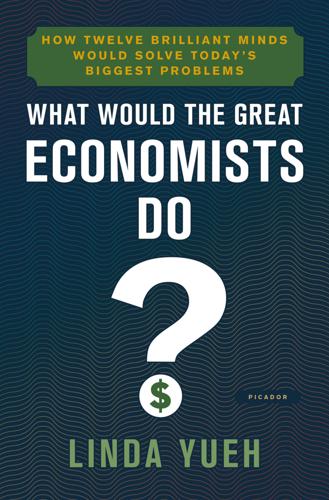
What Would the Great Economists Do?: How Twelve Brilliant Minds Would Solve Today's Biggest Problems
by
Linda Yueh
Published 4 Jun 2018
Minsky meltdowns Irving Fisher’s insights were revived in the 1990s by Hyman Minsky, who had incorporated ideas from Fisher as well as others in formulating his theory that private corporate debt, largely ignored in macroeconomic models, would lead to a financial crisis. He warned against speculative bubbles arising in inflated asset prices which had economy-wide implications. The financial instability hypothesis developed by Minsky describes how credit bubbles form,19 while Fisher’s debt-deflation described how they collapse and drag the economy into recession and depression. Minsky believed that, after prolonged prosperity, capitalist economies tend to move from a financial structure dominated by stable finance to one that increasingly emphasizes speculative and Ponzi finance, which are unstable.
…
He viewed such cycles as endemic to a capitalist system, their severity depending on the dynamics of such a financial system and the regulations that govern the economy.20 When he passed away in 1996 at the age of seventy-seven, Minsky hadn’t seen that the 2008 sub-prime mortgage bubble would cause The Economist to dub it ‘Minsky’s Moment’.21 During his lifetime, his work attracted little notice, but the global financial crisis would elevate Minsky and his ideas. Former Fed chair Janet Yellen, while vice-chair to Ben Bernanke during the 2009 recession, gave a speech entitled: ‘A Minsky Meltdown: Lessons for Central Bankers’. She pointed out: ‘As Minsky’s financial instability hypothesis suggests, when optimism is high and ample funds are available for investment, investors tend to migrate … to the risky speculative and Ponzi end.’ She added: ‘In retrospect, it’s not surprising that these developments led to unsustainable increases in bond prices and house prices. Once those prices started to go down, we were quickly in the midst of a Minsky meltdown.’22 Much like Fisher, Minsky’s prescription would have entailed recognizing the importance of debt in causing the boom.
…
Yellen agrees: ‘Regardless of one’s views on using monetary policy to reduce bubbles, it seems plain that supervisory and regulatory policies could help prevent the kinds of problems we now face. Indeed, this was one of Minsky’s major prescriptions for mitigating financial instability.’23 It seems that interest in both Fisher and Minsky has been revived by the recent global financial crisis. However, the debt-deflation stage of the financial instability hypothesis so far remains a threat rather than a reality. The global financial crisis Just as the Great Recession offers parallels to the Great Depression, debt has once again returned as an issue for major economies after the 2008 global financial crisis. At the end of 2015, government debt as a share of GDP was 243 per cent in Japan, 105 per cent in the US, 92 per cent in the euro area, and 90 per cent in the UK.
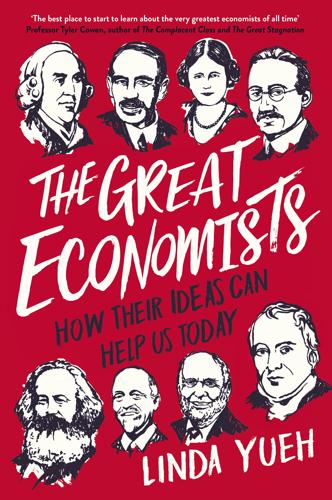
The Great Economists: How Their Ideas Can Help Us Today
by
Linda Yueh
Published 15 Mar 2018
Minsky meltdowns Irving Fisher’s insights were revived in the 1990s by Hyman Minsky, who had incorporated ideas from Fisher as well as others in formulating his theory that private corporate debt, largely ignored in macroeconomic models, would lead to a financial crisis. He warned against speculative bubbles arising in inflated asset prices which had economy-wide implications. The financial instability hypothesis developed by Minsky describes how credit bubbles form,19 while Fisher’s debt-deflation described how they collapse and drag the economy into recession and depression. Minsky believed that, after prolonged prosperity, capitalist economies tend to move from a financial structure dominated by stable finance to one that increasingly emphasizes speculative and Ponzi finance, which are unstable.
…
He viewed such cycles as endemic to a capitalist system, their severity depending on the dynamics of such a financial system and the regulations that govern the economy.20 When he passed away in 1996 at the age of seventy-seven, Minsky hadn’t seen that the 2008 sub-prime mortgage bubble would cause The Economist to dub it ‘Minsky’s Moment’.21 During his lifetime, his work attracted little notice, but the global financial crisis would elevate Minsky and his ideas. Former Fed chair Janet Yellen, while vice-chair to Ben Bernanke during the 2009 recession, gave a speech entitled: ‘A Minsky Meltdown: Lessons for Central Bankers’. She pointed out: ‘As Minsky’s financial instability hypothesis suggests, when optimism is high and ample funds are available for investment, investors tend to migrate … to the risky speculative and Ponzi end.’ She added: ‘In retrospect, it’s not surprising that these developments led to unsustainable increases in bond prices and house prices. Once those prices started to go down, we were quickly in the midst of a Minsky meltdown.’22 Much like Fisher, Minsky’s prescription would have entailed recognizing the importance of debt in causing the boom.
…
Yellen agrees: ‘Regardless of one’s views on using monetary policy to reduce bubbles, it seems plain that supervisory and regulatory policies could help prevent the kinds of problems we now face. Indeed, this was one of Minsky’s major prescriptions for mitigating financial instability.’23 It seems that interest in both Fisher and Minsky has been revived by the recent global financial crisis. However, the debt-deflation stage of the financial instability hypothesis so far remains a threat rather than a reality. The global financial crisis Just as the Great Recession offers parallels to the Great Depression, debt has once again returned as an issue for major economies after the 2008 global financial crisis. At the end of 2015, government debt as a share of GDP was 243 per cent in Japan, 105 per cent in the US, 92 per cent in the euro area, and 90 per cent in the UK.
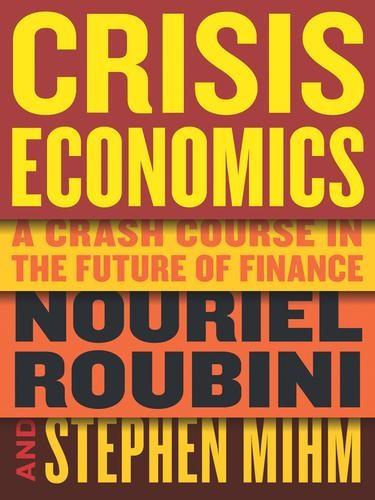
Crisis Economics: A Crash Course in the Future of Finance
by
Nouriel Roubini
and
Stephen Mihm
Published 10 May 2010
.”: Hyman Minsky, Stabilizing an Unstable Economy (New York: McGraw-Hill, 2008), 134. 50 “Implicit in [Keynes’s] analysis . . .”: Minsky, John Maynard Keynes, 11-12. 51 “The interposition of this veil . . .”: John Maynard Keynes, Essays in Persuasion (New York: W.W. Norton, 1963), 169. 51 Financial Instability Hypothesis: Hyman Minsky, “The Financial Instability Hypothesis: An Interpretation of Keynes and an Alternative to ‘Standard’ Theory,” and “The Financial Instability Hypothesis: A Restatement,” both in Minsky, Can “It” Happen Again? Essays on Instability and Finance (Armonk, N.Y.: M. E. Sharpe, 1982), 59-70, 90-116. 52 Irving Fisher: Irving Fisher, “The Debt-Deflation Theory of Great Depressions,” Econometrica 1 (1933): 346. 54 The Austrian School: See Steven Horwitz, “The Austrian Marginalists: Menger, Böhm-Bawerk, and Wieser,” and Peter J.
…
Again, per Keynes, he recognized that this dynamism injected uncertainty into economic calculations. In good times, the promise of continuing growth and profits allayed uncertainty. But in bad times, uncertainty would prompt financial players to curtail lending, reduce risk and exposure, and hoard capital. In itself, this view was not entirely revolutionary. But Minsky’s Financial Instability Hypothesis had another dimension. He categorized the debtors in a given economy into three groups, according to the nature of the financing they used: hedge borrowers, speculative borrowers, and Ponzi borrowers. Hedge borrowers are those who can make payments on both the interest and the principal of their debts from their current cash flow.
…
in Bretton Woods system carry trade in decline of depreciation of future of purchasing power of as reserve currency swap lines and value of double agency conflict Dubai Dubai Ports World Dubai World dynamic provisioning Eastern Europe see also specific countries economic crises, see financial crises economic growth in China deflation and future of Great Moderation and high economic history economics, as science Economic Stimulus Act (2008) Economist Ecuador Edward III, king of England Efficient Market Hypothesis emerging markets (economies) current account deficits in current account surpluses in financial crises in globalization and Great Moderation and recovery in resilience in savings in U.S. compared with U.S. debt purchased by see also specific countries employment full globalization and Keynes’s views on monetarist view of of regulators endowment funds endowment managers England central bank of, see Bank of England entrepreneurship equities equity of banks hedge funds and home leverage and equity firms equity funds, private equity tranche Estonia Europe emerging future of lack of stimulus policy in Latin American debt crisis and panics in regulation in securitized products purchased by shared vulnerabilities in see also specific countries European Central Bank European Economic Recovery Plan European Monetary Union European Union (EU) euros Eurozone exchange rates fixed flexible exogenous negative supply-side shock exports dependence on Extraordinary Popular Delusions and the Madness of Crowds (Mackay) Fama, Eugene Fannie Mae government takeover of securitization and Federal Deposit Insurance Corporation (FDIC) receivership process of reform and Federal Home Loan Bank Federal Housing Administration (FHA) Federal Open Market Committee Federal Reserve bank borrowing and Bear Stearns bailout and bubbles banished by crisis control failure of current account deficit and deposit insurance limits raised by discount window of exit strategy of Great Depression and Greenspan put and independence of as investor of last resort Lehman Brothers and as lender of last resort lending facilities created by lines of credit from liquidity trap and long-term loans to banks provided by LTCM bailout and open market operations of origins of quantitative easing and reform and sale of Bear Stearns and swap lines of threat of new bubbles and Volcker’s policies in Federal Reserve Board Federal Savings and Loan Insurance Corporation Fed Funds rate feedback theory Financial Accounting Standards Board (FASB) financial crises first global (1825) future in historical perspective as norm origins of reduced to one failure response to see also crisis economics; Great Depression; panics, financial; specific topics financial crisis (2008) assumptions and as “black swan” event bubble in Cheney’s assessment of containment of decoupling from disbelief and denial of signs of global spread of Great Depression compared with greed and holistic and eclectic approach to lingering questions about Obama administration’s response to pandemics compared with previous crises compared with Roubini’s predictions for structural origins of see also Great Recession Financial Industry Regulatory Authority financial innovation failure of government to keep pace with Greenspan’s views on regulation and Financial Instability Hypothesis financial institutions, debt of financial markets Financial Services Authority (FSA) Financial Services Modernization Act (1999) Financial Services Oversight Council Financial Stability Board Financial Times Finland firms capital spending by in emerging Europe failure of shareholders of see also too-big-to-fail (TBTF) firms; specific firms fiscal deficits recovery and fiscal policy aftermath of capital injections and conventional cross-border implications of Federal Reserve’s infringing on guarantees as Keynes’s views on monetary policy blurred with monetary policy compared with stimulus spending as, see stimulus spending see also taxes Fisher, Irving Fitch Ratings Flexible Credit Lines (FCLs) flexicurity Fortis France Franco-Prussian War francs, Swiss Frankel, Jeffrey fraud Freddie Mac government takeover of securitization and free rider problem Friedman, Milton FSA (Financial Services Authority) full employment G-7 countries G-10 countries G-20 countries gambling for redemption Gaussian copula GDP, see gross domestic product GE Capital Geithner, Timothy General Motors General Theory of Employment, Interest and Money, The (Keynes) Germany banks in easy money from IMF and savings in surpluses in Giscard d’Estaing, Valéry Glass-Steagall Act (1933) global economy dangers to future of imbalances in Roubini’s predictions for see also specific topics global governance globalization future of “global savings glut” hypothesis global super-regulator GMAC gold Goldman Sachs as bank holding company dismembering of hedge funds of revolving-door appointments and gold standard goods and services aggregate demand and government Austrian School’s view of bonds of, see bonds, government crises caused by crisis role of debt and demand created by failure to keep pace with financial innovation by Federal Reserve’s infringing on Fisher’s view of globalization and guarantees of insurance partnership formed with ailing banks by intervention of Keynesian view of monetarist view of reform of compensation and safety net of stimulus spending by, see stimulus spending toxic bank assets purchased by see also fiscal policy; local government; state government; specific organizations Government National Mortgage Association (Ginnie Mae) Gramlich, Edward Gramm, Phil Gramm-Leach-Bliley Act (1999) Grant, James Grant Street National Bank Great Britain banks in empire of panics in reserve currency of Great Contraction Great Depression Austrian School’s view of deflation and deposit insurance in economic collapse in financial crisis (2008) compared with Fisher’s views on Hoover and Keynes’s views on monetarist view of reform and risk of repeat of Great Instability Great Moderation Great Recession see also specific topics Great Synchronization Greece greed Greenspan, Alan Greenspan put gross domestic product (GDP) consumption and finance’s “contribution” to recovery and guarantees, government see also deposit insurance Harvard University Hatoyama, Yukio Hausmann, Ricardo Hayek, Friedrich health care hedge borrowers hedge funds compensation at as disease vectors in foreign countries leverage and mortgage-backed securities and reforms and regulation and supervision of in shadow banking system Hitler, Adolf Holland tulip bubble in home equity loans home ownership, promotion of Home Ownership and Equity Protection Act (1994) homes, see housing Hong Kong Hoover, Herbert households debt of in emerging Europe in Japan House of Representatives, U.S.
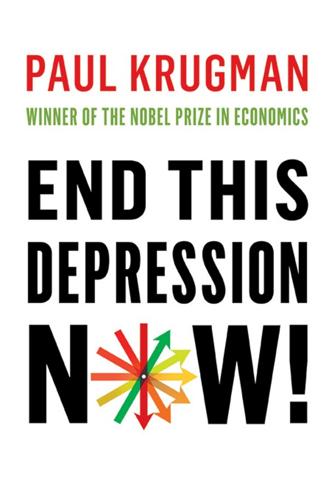
End This Depression Now!
by
Paul Krugman
Published 30 Apr 2012
His books are not, to say the least, user-friendly; nuggets of brilliant insight are strewn thinly across acres of turgid prose and unnecessary algebra. And he also cried wolf too often; to paraphrase an old joke by Paul Samuelson, he predicted around nine of the last three major financial crises. Yet these days many economists, yours truly very much included, recognize the importance of Minsky’s “financial instability hypothesis.” And those of us, again like yours truly, who were relative latecomers to Minsky’s work wish that we had read it much earlier. Minsky’s big idea was to focus on leverage—on the buildup of debt relative to assets or income. Periods of economic stability, he argued, lead to rising leverage, because everyone becomes complacent about the risk that borrowers might not be able to repay.
…
.: economic growth and, 225–26 of 2012, 226 emergency aid, 119–20, 120, 144, 216 environmental regulation, 221 Essays in Positive Economics (Friedman), 170 euro, 166 benefits of, 168–69, 170–71 creation of, 174 economic flexibility constrained by, 18, 169–73, 179, 184 fixing problems of, 184–87 investor confidence and, 174 liquidity and, 182–84, 185 trade imbalances and, 175, 175 as vulnerable to panics, 182–84, 186 wages and, 174–75 Europe: capital flow in, 169, 174, 180 common currency of, see euro creditor nations of, 46 debtor nations of, 4, 45, 46, 139 democracy and unity in, 184–85 fiscal integration lacking in, 171, 172–73, 176, 179 GDP in, 17 health care in, 18 inflation and, 185, 186 labor mobility lacking in, 171–72, 173, 179 1930s arms race in, 236 social safety nets in, 18 unemployment in, 4, 17, 18, 176, 229, 236 Europe, debt crisis in, x, 4, 40, 45, 46, 138, 140–41, 166–87 austerity programs in, 46, 144, 185, 186, 188, 190 budget deficits and, 177 fiscal irresponsibility as supposed cause of (Big Delusion), 177–79, 187 housing bubbles and, 65, 169, 172, 174, 176 interest rates in, 174, 176, 182–84, 190 liquidity fears and, 182–84 recovery from, 184–87 unequal impact of, 17–18 wages in, 164–65, 169–70, 174–75 European Central Bank, 46, 183 Big Delusion and, 179 inflation and, 161, 180 interest rates and, 190, 202–3 monetary policy of, 180, 185, 186 European Coal and Steel Community, 167 European Economic Community (EEC), 167–68 European Union, 172 exchange rates, fixed vs. flexible, 169–73 executive compensation, 78–79 “outrage constraint” on, 81–82, 83 expansionary austerity, 144, 196–99 expenditure cascades, 84 Fama, Eugene, 69–70, 73, 97, 100, 106 Fannie Mae, 64, 65–66, 100, 172, 220–21 Farrell, Henry, 100, 192 Federal Deposit Insurance Corporation (FDIC), 59, 172 Federal Housing Finance Agency, 221 Federal Reserve, 42, 103 aggressive action needed from, 216–19 creation of, 59 foreign exchange intervention and, 217 inflation and, 161, 217, 219, 227 interest rates and, 33–34, 93, 105, 117, 134, 135, 143, 151, 189–90, 193, 215, 216–17 as lender of last resort, 59 LTCM crisis and, 69 money supply controlled by, 31, 32, 33, 105, 151, 153, 155, 157, 183 recessions and, 105 recovery and, 216–19 in 2008 financial crisis, 104, 106, 116 unconventional asset purchases by, 217 Federal Reserve Bank of Boston, 47–48 Feinberg, Larry, 72 Ferguson, Niall, 135–36, 139, 160 Fianna Fáil, 88 filibusters, 123 financial crisis of 2008–09, ix, x, 40, 41, 69, 72, 99, 104, 111–16 Bernanke on, 3–4 Big Lie of, 64–66, 100, 177 capital ratios and, 59 credit crunch in, 41, 110, 113, 117 deleveraging in, 147 Federal Reserve and, 104, 106 income inequality and, 82, 83 leverage in, 44–46, 63 panics in, 4, 63, 111, 155 real GDP in, 13 see also depression of 2008–; Europe, debt crisis in financial elite: political influence of, 63, 77–78, 85–90 Republican ideology and, 88–89 top 0.01 percent in, 75, 76 top 0.1 percent in, 75, 76, 77, 96 top 1 percent in, 74–75, 74, 76–77, 96 see also income inequality financial industry, see banks, banking industry financial instability hypothesis, 43–44 Financial Times, 95, 100, 203–4 Finland, 184 fiscal integration, 171, 172–73, 176 Fisher, Irving, 22, 42, 44–46, 48, 49, 52, 163 flexibility: currency and, 18, 169–73 paradox of, 52–53 Flip This House (TV show), 112 Florida, 111 food stamps, 120, 144 Ford, John, 56 foreclosures, 45, 127–28 foreign exchange markets, 217 foreign trade, 221 Fox News, 134 Frank, Robert, 84 Freddie Mac, 64, 65–66, 100, 172, 220–21 free trade, 167 Friedman, Milton, 96, 101, 181, 205 on causes of Great Depression, 105–6 Gabriel, Peter, 20 Gagnon, Joseph, 219, 221 Gardiner, Chance (char.), 3 Garn–St.
…
Gregory, 227 manufacturing capacity, 16 marginal product, 78 markets: “efficient” hypothesis of, 97–99, 100, 101, 103–4 inflation and, 202 investor rationality and, 97, 101, 103–4 Keynes on, 97, 98 1987 crash in, 98 panic in, 4 speculative excess in, 97, 98 in 2008 financial crisis, 117 McCain, John, 113 McConnell, Mitch, 109 McCulley, Paul, 48 McDonald’s, 6, 7 Medicaid, 120, 120, 121 Medicare, 18, 172 Meltzer, Allan, 151–52 Mencken, H. L., 87 Miami, Fla., 112 Mian, Atif, 47 Minsky, Hyman: financial instability hypothesis of, 43–44, 47 renewed appreciation of, 41, 42–43 Minsky moments, 48, 111, 146 bank runs as, 58 MIT, Billion Prices Project of, 161 monetarism, 101, 135 monetary base, 31, 32, 188 Monetary Control Act (1980), 61 monetary policy, 39, 105, 207 deficit spending and, 135 expansionary, xi, 151, 185, 188 short-term interest rates in, 216–17 “Monetary Theory and the Great Capitol Hill Baby Sitting Co-op Crisis” (Sweeney and Sweeney), 26–27 money market funds, 62 money supply: in babysitting co-op example, 27, 29, 32–33 Federal Reserve and, 31, 32, 33, 105, 151, 153, 155, 157, 183 liquidity traps and, 152, 155 Montgomery Ward, 148–49 Moody’s, 113, 194 moral hazard, 60, 68 Morgan, J.
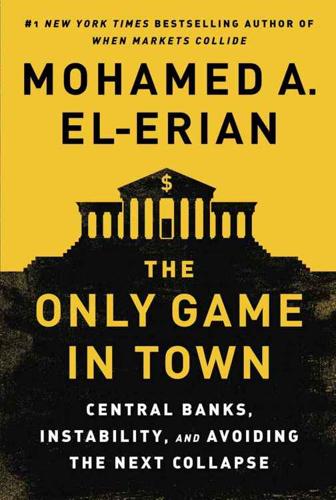
The Only Game in Town: Central Banks, Instability, and Avoiding the Next Collapse
by
Mohamed A. El-Erian
Published 26 Jan 2016
“Rational bubble riding” became acceptable, and the incentive to do so was turbocharged by an industry that has become more short-term focused in assessing both absolute and relative performance, and in which capital can move quite quickly given that few end investors are willing to revise down their return expectations. To some, the behavior of financial markets once again showed insufficient heed paid to the important insights of Hyman Minsky, the American economist. Known for his “financial instability hypothesis,”7 Minsky argued that, in capitalist economies, periods of financial stability give rise to subsequent periods of great financial instability. The extent of underlying moral hazard became more and more notable. I remember being bemused in October 2014 by the extent to which the return of some modest market volatility caused some respected market participants to call for the Fed to come up with “QE4”—that is, yet another program of large-scale asset purchases in order to repress market volatility and artificially boost asset prices again.
…
The impact of information failures and market imperfections is accentuated by behavioral patterns that result in recurrent errors as well as principal-agent misalignments. Asset managers’ approach to business risk has also been shown to be a “strong motivator for institutional herding and rational bubble riding.”3 The Minsky financial instability hypothesis is also relevant here, reminding us that long periods of stability tend to encourage behaviors that then fuel instability. All these shifts have been turbocharged by the low interest rate environment. As Jaime Caruana, the general manager of the BIS, put it in a December 2014 speech in Abu Dhabi when commenting on the migration of risks to the nonbank sector: “It is likely, though not undisputed, that the search for yield in a low interest rate environment can contribute to the build-up of financial imbalances.
…
El-Erian, “The ECB Can Only Buy Time for Europe’s Politicians,” Financial Times, January 22, 2015, http://www.ft.com/intl/cms/s/0/957b9ddc-a241-11e4-bbb8-00144feab7de.html. 6. Tracy Alloway, “Markets’ Misplaced Faith in Central Banks,” Financial Times, January 23, 2015, http://www.ft.com/intl/cms/s/0/2ad516fa-a2d4-11e4-ac1c-00144feab7de.html. 7. Hyman Minsky, “The Financial Instability Hypothesis,” Working Paper No. 74, Levy Economics Institute of Bard College, 1992. 8. Mohamed A. El-Erian, “Beware of Calls for QE4,” Financial Times, October 17, 2014, http://blogs.ft.com/the-a-list/2014/10/17/beware-of-calls-for-qe4/. 9. Chris Giles, “Carney Warns on Low Interest Rates,” Financial Times, January 24, 2015, http://www.ft.com/intl/cms/s/0/c20266fe-a3fb-11e4-b90d-00144feab7de.html. 10.
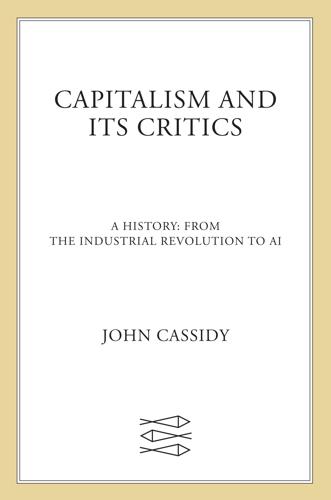
Capitalism and Its Critics: A History: From the Industrial Revolution to AI
by
John Cassidy
Published 12 May 2025
Friedman and Friedman, Free to Choose, 297. 46. Martin Anderson, Revolution (San Diego: Harcourt Brace Jovanovich, 1988), 172. 47. Hyman P. Minsky, “The Financial Instability Hypothesis: A Restatement,” Thames Papers in Political Economy (Autumn 1978), 3. 48. Minsky, “Financial Instability Hypothesis: A Restatement,” 2. 49. Minsky, “Financial Instability Hypothesis: A Restatement,” 17. 50. Minsky, “Financial Instability Hypothesis: A Restatement,” 17. 23. Nicholas Georgescu-Roegen and the Limits to Growth 1. Economic Report of the President: Transmitted to the Congress, January 1962, Together with the Annual Report of the Council of Economic Advisers (Washington, DC: US Government Printing Office, 1962), 9, https://www.presidency.ucsb.edu/sites/default/files/books/presidential-documents-archive-guidebook/the-economic-report-of-the-president-truman-1947-obama-2017/1962.pdf. 2.
…
After doing his undergraduate degree at the University of Chicago and completing his doctorate in 1954 at Harvard, where his first supervisor was Joseph Schumpeter, he taught at Brown and Berkeley. In 1965 he moved to St. Louis, where, in addition to teaching at Washington University, he began a long-standing association with the local Mark Twain Bank, eventually serving as a director. Throughout the 1970s, Minsky published various versions of his theory, which he termed “the Financial Instability Hypothesis,” before summarizing and restating it in his 1978 paper, which described it as “an alternative to the neo-classical synthesis, i.e., to today’s standard economic theory. It is designed to explain instability as a result of the normal functioning of a capitalist economy.”48 Minsky said his theory was in the spirit of Keynes, who also had firsthand knowledge of the financial industry.
…
As Bear tottered on the brink in March 2008, the US Treasury and the Federal Reserve orchestrated a rescue, in which the Fed provided an emergency loan and JPMorgan Chase bought the firm’s operations for a song. Six months later, when Lehman found itself in a similar pickle, the Treasury and the Federal Reserve refused to bail it out. On Monday, September 15, 2008, Lehman filed for bankruptcy. The subprime blowup provided confirmation for Hyman Minsky’s Financial Instability Hypothesis, which he had expounded in the 1970s. As the great real estate boom proceeded, the level of risk-taking by homeowners, mortgage providers, and Wall Street issuers of mortgage securities gradually ramped up. By the later stages, mortgage providers were issuing home loans to buyers who, based on their incomes, couldn’t hope to meet the true financing costs, and often didn’t even understand the nature of the commitments they were taking on.
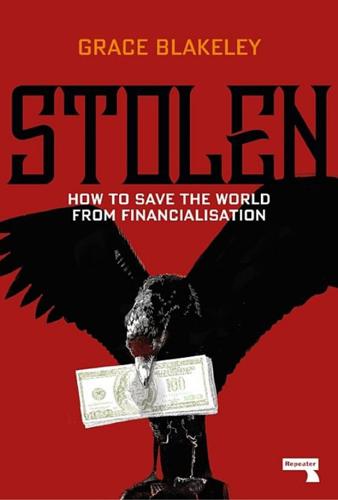
Stolen: How to Save the World From Financialisation
by
Grace Blakeley
Published 9 Sep 2019
, British Politics, vol. 7 Chapter Five The Crash 1 This account draws on: Tooze, A. (2018) Crashed: How a Decade of Financial Crises Changed the World, London: Allen Lane; Pym (2014); Fraser, I. (2014) Shredded: Inside RBS, the Bank That Broke Britain, Edinburgh: Birlinn; Sorkin, A.R. (2010) Too Big to Fail: The Inside Story of How Wall Street and Washington Fought to Save the Financial System — and Themselves, London: Penguin; Blinder, A.S. (2013) After the Music Stopped: The Financial Crisis, the Response, and the 2 This account draws on: Palley, T. (2009) “The Limits of Minsky’s Financial Instability Hypothesis as an Explanation of the Crisis”, Macroeconomic Policy Institute Working Paper 11; Foster (2009); Panitch and Gindin (2009); Gowan (2009); Arestis (2011); Crotty (2008); Duménil and Levy (2011); Lysandrou (2011); Stockhammer (2010). 3 Barwell, R. and Burrows, O. (2010), “Growing Fragilities? Balance Sheets in the Great Moderation”, Bank of England Financial Stability Paper 10 4 This account draws on: Minsky (1986); Keynes (1936); Minsky, H. (1993) “The Financial Instability Hypothesis”, in Arestis, P. and Sawyer, M. (eds.) The Elgar Companion to Political Economy, London: Edward Elgar Publishing; Shiller, R. (2000) Irrational Exuberance, USA: Princeton University Press; Wray (2011; 2015); Jayadev, A. (2016) “Minsky’s Many Moments”, Institute for New Economic Thinking, 5 August. https://www.ineteconomics.org/perspectives/blog/minskys-many-moments; Muñoz, J. (2011) “Orthodox versus Heterodox (Minskyan) Perspectives of Financial Crises: Explosion in the 1990s versus Implosion in the 2000s”, Levy Economics Institute Working Paper 695 http://www.levyinstitute.org/pubs/wp_695.pdf; Whalen, C. (2017) “Understanding Financialization: Standing on the Shoulders of Minsky”, Levy Economics Institute Working Paper 892. http://www.levyinstitute.org/pubs/wp_892.pdf; Knight, F. (1921) Risk, Uncertainty and Profit; Fisher, I. (1933) The Debt-Deflation Theory of Great Depressions; Wray, L.R. and Tymoigne, É. (2008) “Macroeconomics Meets Hyman P.
…
The Elgar Companion to Political Economy, London: Edward Elgar Publishing; Shiller, R. (2000) Irrational Exuberance, USA: Princeton University Press; Wray (2011; 2015); Jayadev, A. (2016) “Minsky’s Many Moments”, Institute for New Economic Thinking, 5 August. https://www.ineteconomics.org/perspectives/blog/minskys-many-moments; Muñoz, J. (2011) “Orthodox versus Heterodox (Minskyan) Perspectives of Financial Crises: Explosion in the 1990s versus Implosion in the 2000s”, Levy Economics Institute Working Paper 695 http://www.levyinstitute.org/pubs/wp_695.pdf; Whalen, C. (2017) “Understanding Financialization: Standing on the Shoulders of Minsky”, Levy Economics Institute Working Paper 892. http://www.levyinstitute.org/pubs/wp_892.pdf; Knight, F. (1921) Risk, Uncertainty and Profit; Fisher, I. (1933) The Debt-Deflation Theory of Great Depressions; Wray, L.R. and Tymoigne, É. (2008) “Macroeconomics Meets Hyman P. Minsky: The Financial Theory of Investment”, Levy Economics Institute Working Paper 543. http://www.levyinstitute.org/publications/macroeconomics-meets-hyman-p-minsky; Bhattacharya, S., Goodhart, C., Tsomocos, D.P. and Vardoulakis, A.P. (2014) “A Reconsideration of Minsky’s Financial Instability Hypothesis”, Journal of Money, Credit and Banking, vol. 45 http://eprints.lse.ac.uk/64218/ 5 OECD (2011) “International Capital Flows: Structural Reforms and Experience with the OECD Code of Liberalisation of Capital Movements”, Report from the OECD to the G20 Sub-Group on Capital Flow Management. https://www.oecd.org/economy/48972216.pdf 6 Lane, P. (2012) “Financial Globalisation and the Crisis”, BIS Working Paper 397. https://ssrn.com/abstract=2248065 7 This account draws on: Blakeley (2018a); Lane (2012); Favilukis, J., Kohn, D., Ludvigson, S.C. and Van Nieuwerburgh, S. (2012), “International Capital Flows and House Prices: Theory and Evidence”, in Housing and the Financial Crisis, Chicago: University of Chicago Press. https://static1.squarespace.com/static/54397369e4b0446f66937a73/t/56590b88e4b0702d37f626e1/1448676232727/nbh.pdf; Ferrero, A. (2012) “House Price Booms, Current Account Deficits, and Low Interest Rates”, Staff Report Number 541, Federal Reserve Bank of New York. https://www.newyorkfed.org/medialibrary/media/research/staff_reports/sr541.pdf; Felix, D. (2005) “Why International Capital Mobility Should Be Curbed and How It Could Be Done”, in Epstein (2005); Geet, P. (2015) “Housing Demand, Savings Gluts and Current Account Dynamics”, Globalization and Monetary Policy Institute Working Paper 221 https://www.dallasfed.org/~/media/documents/institute/wpapers/2015/0221.pdf; Guschanski, A. and Stockhammer, E. (2017) “Are Current Accounts Driven by Competitiveness or Asset Prices?
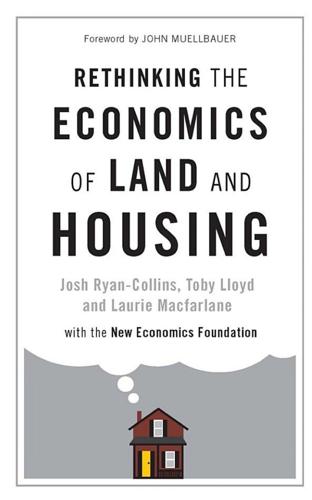
Rethinking the Economics of Land and Housing
by
Josh Ryan-Collins
,
Toby Lloyd
and
Laurie Macfarlane
Published 28 Feb 2017
Before then, it is based upon unpublished work by John Muellbauer and uses regional loan-to-value mortgage rates for first-time buyers. After 2001, the estimates are based on dummy variables that help explain consumption, given all the other factors. Thanks to Professor John Muellbauer for making available the data. 12 See Minsky (1992) for a short and accessible summary of his ‘financial instability hypothesis’ and Minsky (1986) for a comprehensive account. 13 In 2014 the FPC put a limit on the proportion of mortgages a bank can issue at loan-to-income multiples above 4.5 to no more than 15% of a bank’s new lending for residential home purchases. At present, no bank exceeds this limit and the average level of lending above a 4.5 loan-to-income ratio is only 10%, so it is not binding on any lending.
…
Rethinking Local Affordable Housing Strategies: Lessons from 70 Years of Policy and Practice. Washington, DC: Brookings Institution. Kay, John Anderson. 2009. Narrow Banking: The Reform of Banking Regulation. Tonbridge: Centre for the Study of Financial Innovation. Keen, Steve. 1995. ‘Finance and Economic Breakdown: Modeling Minsky’s “Financial Instability Hypothesis”’. Journal of Post Keynesian Economics 17 (4): 607–35. Keen, Steve. 2011. Debunking Economics: The Naked Emperor Dethroned? 2nd ed. London: Zed Books. Keen, Steve. 2013. ‘A Monetary Minsky Model of the Great Moderation and the Great Recession’. Journal of Economic Behavior and Organization 86: 221–35.
…
In The Causes and Consequences of the Long UK Expansion, ed. J. S. Chadha, A. Chrystal, J. Pearlman, P. Smith, and S. Wright. Cambridge: Cambridge University Press. Minsky, Hyman. 1986. Stabilizing and Unstable Economy. New Haven, CT: Yale University Press. Minsky, Hyman P. 1992. ‘The Financial Instability Hypothesis’. The Jerome Levy Economics Institute Working Paper no. 74, May. Mirrlees, James, and Stuart Adam. 2011. Tax by Design: The Mirrlees Review. Vol. 2. Oxford: Oxford University Press. Modigliani, Franco, and Richard Brumberg. 1954. ‘Utility Analysis and the Consumption Function: An Interpretation of Cross-Section Data’.
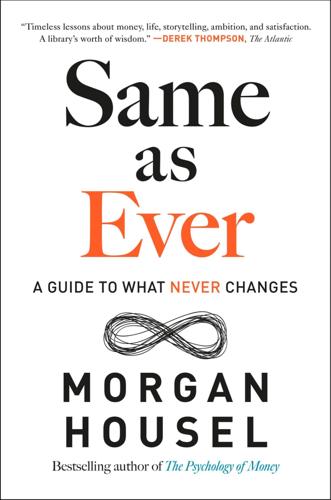
Same as Ever: A Guide to What Never Changes
by
Morgan Housel
Published 7 Nov 2023
If we could launch intercontinental ballistic missiles and walk on the moon, surely we could prevent two quarters of negative GDP growth. Hyman Minsky, who spent most of his career as an economist at Washington University in St. Louis, was fascinated by the boom-and-bust nature of economies. He also thought the idea of eradicating recessions was nonsense, and always would be. Minsky’s seminal theory was called the financial instability hypothesis. The idea isn’t heavy on math and formulas. It describes a psychological process that basically goes like this: • When an economy is stable, people get optimistic. • When people get optimistic, they go into debt. • When they go into debt, the economy becomes unstable.
…
GO TO NOTE REFERENCE IN TEXT “To tell you the truth”: “(1) Muscular Movement in Man: The Factors Governing Speed and Recovery from Fatigue (2) Living Machinery: Six Lectures Delivered before a ‘Juvenile Auditory’ at the Royal Institution, Christmas 1926 (3) Basal Metabolism in Health and Disease,” Nature 121 (1928): 314–16, nature.com/articles/121314a0. GO TO NOTE REFERENCE IN TEXT Calm Plants the Seeds of Crazy Minsky’s seminal theory: Hyman P. Minsky, “The Financial Instability Hypothesis,” Working Paper No. 74, Levy Economics Institute of Bard College, May 1992, levyinstitute.org/pubs/wp74.pdf. GO TO NOTE REFERENCE IN TEXT “Everything feels unprecedented”: Kelly Hayes, @MsKellyMHayes, Twitter post, July 11, 2020, 4:22 p.m., twitter.com/MsKellyMHayes/status/1282093046943952902.
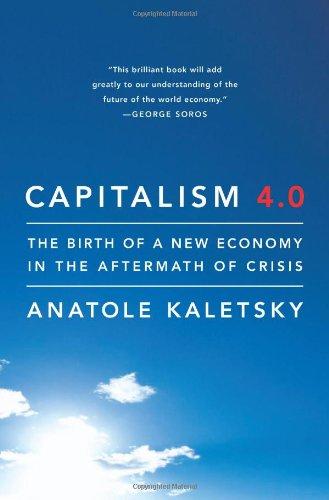
Capitalism 4.0: The Birth of a New Economy in the Aftermath of Crisis
by
Anatole Kaletsky
Published 22 Jun 2010
Minsky’s theories were ignored by the academic establishment from the 1980s onward but came back into prominence during the 2007 crisis and received widespread attention not only in the media but also in central banks and finance ministries around the world. A key feature of what Minsky called his Financial Instability Hypothesis was that economic stability would encourage banks to innovate. When economic conditions prove surprisingly benign, banks start accepting low-quality assets as collateral and find new ways of lending to ever-riskier borrowers. These processes eventually become unsustainable. But crucially, the unwinding of leverage does not occur in a gradual way that would bring the system back into equilibrium, as assumed by mainstream academic economics.
…
The point of inflection in this cycle, when lenders suddenly realize that they were dangerously overoptimistic in their lending decisions and their original assumptions about asset values, is often described as a Minsky Moment. A classic such moment occurred during the Russian government default and hedge fund crisis of 1998.5 According to many analysts, the 2007-09 credit crunch was a Minsky Moment writ large. George Soros’s Theory of Reflexivity can be seen as a generalization of Minsky’s Financial Instability Hypothesis and Keynes’s theory of animal spirits. Soros puts both on a different philosophical basis by emphasising the two-way interaction between people’s perceptions and the events perceived. Soros argues that miscalculations made by both lenders and borrowers result from the gap that inevitably exists between reality and human understanding.
…
Right on “moral righteousness” and panic/loss of confidence predictions of global collapse preventing scenarios regulation and trend/cycle relationship Financial crisis of 2007-09 causes conservatives on deregulation financial institutions debt-chains lack of government guarantees and lack of government intervention mark-to-market accounting/effects market fundamentalism new classical school on political ideology political mismanagement standard view/flaws See also Lehman Brothers collapse; Paulson, Henry/financial crisis (2007-09) Financial Instability Hypothesis (boom-bust cycle theory) Fitoussi, Paul Fooled by Randomness (Taleb) Fool’s Gold (Tett) Ford, Henry Frank, Barney Free to Choose (Friedman) Friedman, Milton Capitalism and economics transformation and on Great Depression inflation monetarism “natural-rate hypothesis,” Frydman, Roman Future scenario of American breakdown See also Capitalism 4.0; Economy of future G20 economies Galbraith, J.
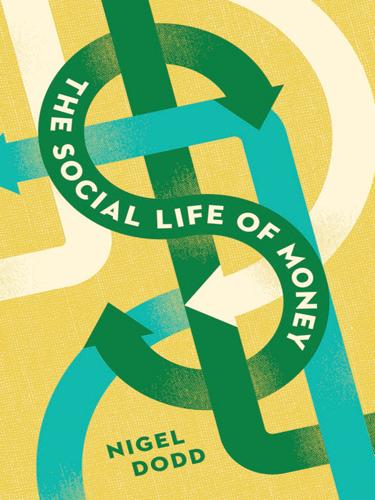
The Social Life of Money
by
Nigel Dodd
Published 14 May 2014
MINSKY’S HALF-CENTURY Hyman Minsky was a doctoral student of Joseph Schumpeter and Wassily Leontief at Harvard during the 1940s. Whereas Schumpeter had drawn attention to banks’ importance in the business cycle, Minsky’s main focus was on the effect of financial markets on the wider economy (Minsky 1993a, 1993b). During the 1970s, Minsky developed the financial instability hypothesis, in which he argued that speculative bubbles and spells of financial market instability are part of the normal life cycle of the economy (Minsky 1992). It is a fundamental characteristic of capitalism, he said, that the economy swings between episodes of robustness and fragility. It befalls to governments to try to alleviate the worst effects of such swings, but it would be naive and mistaken to believe that they can be eradicated.
…
“The Trials and Misadventures of Schumpeter’s Treatise on Money.” History of Political Economy 29: 639–73. Minsky, H. P. (1975). John Maynard Keynes, New York, Columbia University Press. Minsky, H. P. (1986). Stabilizing an Unstable Economy, New Haven, CT, Yale University Press. Minsky, H. P. (1992). “The Financial Instability Hypothesis.” Jerome Levy Economics Institute, Working Paper No. 74, Annandale-on-Hudson, NY, Levy Economics Institute of Bard College. www.levyinstitute.org/pubs/wp74.pdf. Minsky, H. P. (1993a). “Finance and Stability: The Limits of Capitalism.” Jerome Levy Economics Institute, Working Paper No. 93, Annandale-on-Hudson, NY, Levy Economics Institute of Bard College. www.levyinstitute.org/pubs/wp93.pdf.
…
See state fiat money fiction, and economic expectations, 16; and language, 36; and the free market, 338; and money, 6, 235, 317; and monetary policy, 110; in Simmel, 317; and truth, 36 fictitious capital, 55, 56, 58, 62, 65, 68–69, 70, 83, 194, 243; Marx’s definition of, 57n16; in Ricardo, 59n finance, etymology, 201; versus money, 61–62, 66, 125; social study of, 295 finance capital, 60, 64, 68, 74, 232, 249 financial engineering, 124 financial expropriation, 79 financial innovation, 121 financial instability hypothesis, 117, 124 financial repression, 69 financial system, 3; and crisis formation, 69; expansion of, 114; relationship to GDP, 114. See also capitalism; Wall Street system financialization, 10, 36, 61n22, 66–67, 391; and banking, 114; and the Eurozone crisis, 79; of money, 245, 298; as privatized Keynesianism, 76 First World War, 50, 59, 103, 225, 245, 256, 356, 362 fiscal cliff, 90, 386 fiscus, 261–62 Fisher, Irving, 120n41, 314; on the paradox of thrift, 347; on stamp scrip, 314, 349 Fisher, Mark, 193 floating money, 191, 244 flow, 227, 232, 233–34, 244; and financial markets, 233n Fond-des-Nègres marketplace, 302 Foster, William, 347 Foucault, Michel, 25, 238, 239, 391; death of “man,” 389–90; desire, 229; on homo economicus, 390; on Nietzsche, 389–90, 391; The Order of Things, 228 Fourcade, Marion, 91 Fourier, Charles, 324 fractional reserve lending, 95, 111, 113, 116, 199n26 Frank, Thomas, 315 Frankfurt School, 322, 326–27 Franklin, Benjamin, 176 fraud, 113, 117n, 120, 132, 137, 199, 313, 368 Freddie Mac, 123 free credit, 352 free labor, 98 free market money, 360, 362 free money, 348 free trade 281 Freicoin, 348n, 349n, 370–71 French Revolution, 84, 355 Freud, Sigmund, 150, 228, 332, 334; Civilization and Its Discontents, 152; on money and saving, 151, 336 Friedman, Milton, 131, 330–31 Frisby, David, on Nietzsche, 136–37, 141–42; on Simmel, 137 Fromm, Erich, 14, 85n45, 345, 356, 372, 382; on economic democracy, 338–39; Escape from Freedom, 331; on having versus being, 315, 331–38; on hoarding, 336, 340–41, 350–51; on the humanistic utopia, 315, 333–34, 338–39, 374; on language, 332; Man for Himself, 331, 341; on Marx, 339; “Medicine and the Ethical Problem of Modern Man,” 340; on Messianic time, 335, 338; on money, 334, 339–40, 341, 346; on the Shabbat, 334–35, 338; on spiritual poverty, 334; To Have or To Be?
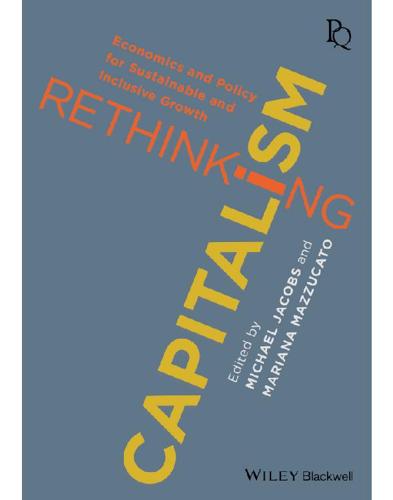
Rethinking Capitalism: Economics and Policy for Sustainable and Inclusive Growth
by
Michael Jacobs
and
Mariana Mazzucato
Published 31 Jul 2016
As the data show, the private sector’s financial balance deteriorated over much of the 1990s, and by 1997 it had forsaken its habitual state of surplus as it began spending in excess of its income (i.e. running deficits) for the first time in generations. The pattern that led to the crisis was strikingly similar to that theorised by Minsky’s ‘financial instability hypothesis’.12 During the boom, private actors—especially households and banks, in this case—started piling up debt at an increasing rate. Then, suddenly, after a fall in house prices, the speculative fever was reversed, generating systemic financial distress and pushing most private actors to try to reduce their indebtedness simultaneously.
…
Krugman, ‘Deficits saved the world’, New York Times, 15 July 2009, http://krugman.blogs.nytimes.com/2009/07/15/deficits-saved-the-world/ (accessed 4 May 2016). 11 See W. Godley, Money, Finance and National Income Determination: An Integrated Approach, Levy Economic Institute Working Paper No. 167, June 1996. 12 See for example H. Minsky, The Financial Instability Hypothesis, Levy Economics Institute Working Paper No. 74. 13 Richard Koo of Nomura Research has popularised this dynamic as a ‘balance sheet recession’. See R. Koo, ‘The world in balance sheet recession: causes, cure, and politics’, Economic Review, issue 58, http://www.paecon.net/PAEReview/issue58/Koo58.pdf (accessed 4 May 2016). 14 J.
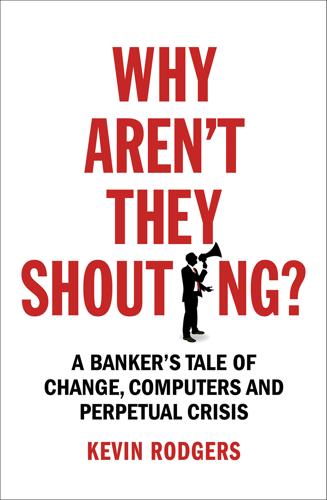
Why Aren't They Shouting?: A Banker’s Tale of Change, Computers and Perpetual Crisis
by
Kevin Rodgers
Published 13 Jul 2016
I feel this viscerally: having lived through several so-called ‘hundred-year storms’ in the course of my career I should be as old as Yoda. Banking is unstable and some economists, outside the mainstream, agree that it is inherently so. One of their inspirations for this view is the work of a maverick American economist, Professor Hyman Minsky (1919–96), whose ‘financial instability hypothesis’, built on the work of Keynes, states the heretical notion that modern economies financed by a modern banking system will inevitably experience bubbles and crashes without needing an external (‘exogenous’) shock.7 Over a protracted period of ‘good times’, he asserts, capitalist economies naturally move from stability into a regime of speculative, ‘Ponzi’, pyramid scheme finance that eventually collapses in on itself in a ‘Minsky moment’.
…
House of Representatives’, 24 July 1998, http://www.federalreserve.gov/boarddocs/testimony/1998/19980724.htm 4 For more on this fascinating topic, see The Myth of the Rational Market, Justin Fox, Harper Business, 2011. 5 The End of History and the Last Man, Francis Fukuyama, Penguin Books, 1992. 6 ‘The Financial Crisis and the Role of Federal Regulators’, Committee on Oversight and Government Reform, House of Representatives, 23 October 2008, http://www.gpo.gov/fdsys/pkg/CHRG-110hhrg55764/html/CHRG-110hhrg55764.htm 7 Stabilizing an Unstable Economy, Professor Hyman Minsky, McGraw-Hill Professional, 1986. 8 ‘Working Paper No. 74, The Financial Instability Hypothesis’, Hyman Minsky, The Jerome Levy Economics Institute of Bard College, May 1992, http://www.levyinstitute.org/pubs/wp74.pdf 9 Unsettled Account: The Evolution of Banking in the Industrialised World since 1800, Richard S. Grossman, Princeton University Press, 2010, p65. 10 ‘Regulatory Capital Reform under Basel III’, Latham & Watkins, March 2011, http://www.garp.org/media/583507/regulatorycapitalreformbaseliii_nicolaides032311.pdf 11 ‘Banks and capital requirements: channels of adjustment’, BIS Working Papers No. 443, Benjamin H.
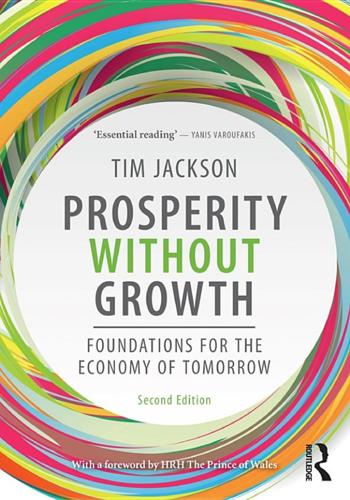
Prosperity Without Growth: Foundations for the Economy of Tomorrow
by
Tim Jackson
Published 8 Dec 2016
Kaya, Yoichi and Keiichi Yokoburi 1997. Environment, Energy, and Economy: Strategies for Sustainability. Tokyo: United Nations University Press. Keen, Steve 2011. Debunking Economics, revised and expanded edition. London and New York: Zed Books. Keen, Steve 1995. ‘Finance and economic breakdown: modelling Minsky’s “financial instability hypothesis”’. Journal of Post Keynesian Economics 17(4): 607–635. Keynes, John Maynard 1978. Collected Writings of John Maynard Keynes, vol. 17. Cambridge: Cambridge University Press. Keynes, John Maynard 1937. The Collected Writings of John Maynard Keynes, vol. 21, World Crises and Policies in Britain and America, reprinted 2012.
…
Online at www.econlib.org/library/Mill/mlP61.html (accessed 26 February 2016). Minsky, Hyman 1994. ‘Financial instability and the decline of banking: public policy implications’. Hyman P. Minsky Archive (Paper 88). Online at http://digitalcommons.bard.edu/hm_archive/88 (accessed 18 July 2016). Minsky, Hyman 1992. ‘The Financial Instability Hypothesis’. Working Paper no. 74. Annandale-on-Hudson: Levy Economics Institute. Online at www.levyinstitute.org/pubs/wp74.pdf (accessed 15 March 2016). Minsky, Hyman 1986. Stabilizing an Unstable Economy. New York: McGraw Hill. Mirowski, Philip 1989. More Heat than Light – Economics as Social Physics, Physics as Nature’s Economics.
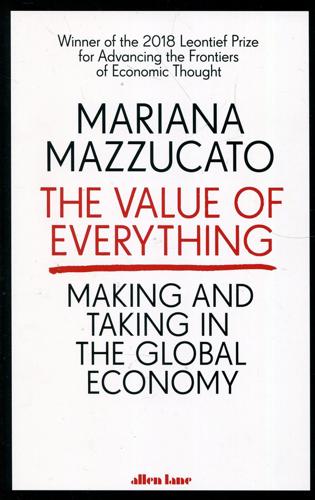
Value of Everything: An Antidote to Chaos The
by
Mariana Mazzucato
Published 25 Apr 2018
Keynes, ‘Evidence to the Royal Commission on lotteries and betting' (1932), p. 400, quoted in Barba and de Vivo, ‘An “unproductive labour” view of finance', p. 1492: http://doi.org/doi:10.1093/cje/bes048 24. Ibid. 25. Keynes, General Theory of Employment, p. 159. 26. H. P. Minsky, ‘The Financial instability hypothesis: An interpretation of Keynes and an alternative to “standard” theory” ', Challenge, 20(1) (1977), pp. 20-27. 27. L. Randall Wray and Y. Nersisyan, ‘Understanding Money and Macroeconomic Policy', in M. Jacobs and M. Mazzucato (eds), Rethinking Capitalism: Economics and Policy for Sustainable and Inclusive Growth (Chichester: Wiley-Blackwell, 2016). 28.
…
Merler, S. and Huttl, P., ‘Welcome to the dark side: GDP revision and the non-observed economy', Bruegel, 2 March 2015: http://bruegel.org/2015/03/welcome-to-the-dark-side-gdp-revision-and-the-non-observed-economy/ Metrick, A. and Yasuda, A., ‘The economics of private equity', Review of Financial Studies, 23(6) (2011), pp. 2303-41: https://doi.org/10.1093/rfs/hhq020 Minsky, H. P., ‘The financial instability hypothesis: An interpretation of Keynes and an alternative to “standard” theory', Challenge, 20(1) (1977), pp. 20-27. Minsky, H. P., Stabilizing an Unstable Economy (New Haven and London: Yale University Press, 1986). Minsky, H. P., ‘Reconstituting the United States' financial structure', Levy Economics Institute Working Paper no. 69 (1992).
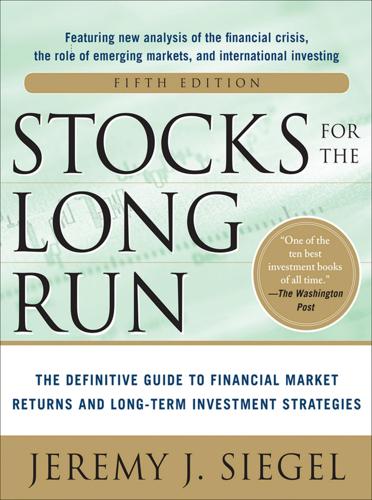
Stocks for the Long Run 5/E: the Definitive Guide to Financial Market Returns & Long-Term Investment Strategies
by
Jeremy Siegel
Published 7 Jan 2014
A slowdown in business activity, which under normal times would be well tolerated, can easily overwhelm highly leveraged borrowers who have too little cushion to insulate them from a market decline. Some economists believe that the cycle of falling risk premiums and rising leverage is the major cause of economic fluctuations. Hyman Minsky, an economics professor from Washington University in St. Louis, formulated the “financial instability hypothesis,”6 in which he believed long periods of economic stability and rising asset prices drew in not only speculators and “momentum” investors but also swindlers who engage in Ponzi schemes that trap ordinary investors who wish to ride the market’s upward breaks. Minsky’s theories never gained much currency with mainstream economists because he did not formulate them in a rigorous form.
…
See Government policy Great Depression vs., 22–23 Great Moderation and, 23–24 legislation fallout after, 52–55 Lehman Brothers in, 34–36 lenders of last resort in, 32–34 LIBOR market after, 46–47 overleverage in, 31–32 rating mistakes in, 25–27 real estate market in, 18–19, 28–30, 45 recession following. See Great Recession regulatory failure in, 30–31 risky assets in, 31–32 rumblings of, 17–19 stock market after, 41–45 subprime mortgages in, 24–25 summary of, 36–37 Treasury bonds after, 45–46 world markets in, 21–22 Financial Industry Regulatory Authority (FINRA), 298–299 Financial instability hypothesis, 24 Financial markets. See Bond market; Stock market Financial sector, 121–125, 203–205 Financial Times , 246 FINRA (Financial Industry Regulatory Authority), 298–299 “First-in-first-out” inventory accounting, 225 First Pacific Advisors, 27 Fisher equation, 223 Fisher, Irving CRSP and, 113 on equity, 9 on inflation, 223 on “permanently high plateau,” 9–14 on purchasing power, 93, 103 Fitch rating agency, 27 Fixed-income assets, 94, 170–171 Flash crash of 2010, 297–300 Float-adjusted shares, 369 Flow of economic data.
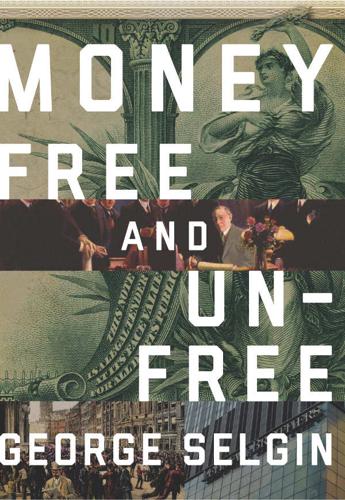
Money Free and Unfree
by
George A. Selgin
Published 14 Jun 2017
CHAPTER 3 1. According to James Barth and Robert Keleher (1984: 16), “to function as a lender of last resort [a central bank] must have authority to create money, i.e., provide unlimited liquidity on demand” (emphasis added). 2. Minsky (1982: 16) even tries to rule potential criticisms of his “financial-instability hypothesis” out-of-court by declaring that “No theory of the behavior of a capitalist economy has merit if it explains instability as the result either of exogenous policy mistakes or of institutional flaws that can be readily corrected.” 3. Canada turned to central banking in 1935, for reasons that had little to do with securing financial stability.
…
Heggestad (ed.), Regulation of Consumer Financial Services. Cambridge, Mass.: Abt Books. Minsky, H. P. (1977) “A Theory of Systemic Fragility.” In E. I. Altman and A. W. Sametz (eds.), Financial Crises: Institutions and Markets in a Fragile Environment. New York: John Wiley & Sons. ——— (1982) “The Financial-Instability Hypothesis: Capitalist Processes and the Behavior of the Economy.” In C. P. Kindleberger and J. P. Laffargue (eds.), Financial Crises: Theory, History, and Policy, 13–39. New York: Cambridge University Press. Mints, L. W. (1945) A History of Banking Theory. Chicago: University of Chicago Press. ——— (1950) Monetary Policy for a Competitive Society.
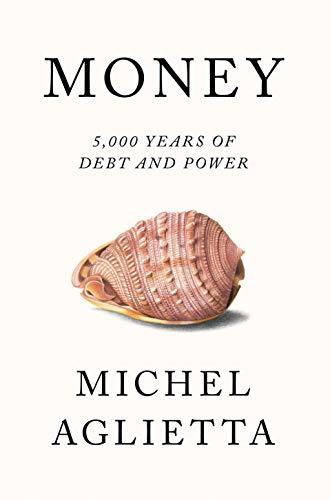
Money: 5,000 Years of Debt and Power
by
Michel Aglietta
Published 23 Oct 2018
Cleveland, ‘The international monetary system in the interwar period’, in Benjamin M. Rowland (ed.), Balance of Power or Hegemony: The Interwar Monetary System, Lehrman Institute, New York: New York University Press, 1976. 6 Barry Eichengreen, The Gold Standard in Theory and History, London: Routledge, 1985. 7 Hyman P. Minsky, ‘The financial instability hypothesis, capitalist processes and the behavior of the economy’, in Charles P. Kindleberger and Jean-Pierre Laffargue (eds), Financial Crises, Theory, History and Policy, Cambridge: Cambridge University Press, 1982, pp. 13–39. 8 Ben Bernanke and Frederic Mishkin, ‘Inflation targeting: A new framework for monetary policy?’
…
Mauss, Marcel (1973), ‘Essai sur le don: Forme et raison de l’échange dans les sociétés archaïques’, Année sociologique (1923–1924), republished in Marcel Mauss, Sociologie et anthropologie, Paris: PUF. Menu, Bernadette (2001), ‘La monnaie des Égyptiens de l’époque Pharaonique’, in Alain Testard (ed.), Aux origines de la monnaie, Paris: Éditions Errance, pp. 73–108. Minsky, Hyman P. (1982), ‘The financial instability hypothesis, capitalist processes and the behavior of the economy’, in Charles P. Kindleberger and Jean-Pierre Laffargue (eds), Financial Crises, Theory, History and Policy, Cambridge: Cambridge University Press, pp. 13–39. Moen, John R. and Ellis W. Tallman (2000), ‘Clearinghouse membership and deposit contraction during the panic of 1907’, Journal of Economic History, vol. 60, no. 1, pp. 145–63.

Manias, Panics and Crashes: A History of Financial Crises, Sixth Edition
by
Kindleberger, Charles P.
and
Robert Z., Aliber
Published 9 Aug 2011
.: Harvard University Press, 1936); and Matthew Simon, Cyclical Fluctuations in the International Capital Movements of the United States, 1865–1897 (New York: Arno, 1979). 2 The Anatomy of a Typical Crisis 1. Joseph A. Schumpeter, Business Cycles: a Theoretical, Historical and Statistical Analysis of the Capitalist Process (New York: McGraw-Hill, 1939), vol. 1, chap. 4, esp. pp. 161ff. 2. Hyman P. Minsky, John Maynard Keynes (New York: Columbia University Press, 1975); and idem, ‘The Financial Instability Hypothesis: Capitalistic Processes and the Behavior of the Economy’, in C.P. Kindleberger and J.-P. Laffargue, eds, Financial Crises: Theory, History and Policy (Cambridge: Cambridge University Press, 1982), pp. 13–29. For a view of the work of Hyman Minsky in historical context, see Perry Mehrling, ‘The Vision of Hyman P.
…
Kindleberger, ‘The Quality of Debt’, in D.B. Papadimitriou, ed., Profits, Deficits and Instability (Basingstoke: Macmillan, 1992). reprinted in idem, The World Economy and National Finance in Historical Perspective (Ann Arbor: University of Michigan Press, 1995), pp. 117–30. 17. See Hyman P. Minsky, ‘The Financial-instability Hypothesis: Capitalist Processes and the Behavior of the Economy’, in C.P. Kindleberger and J.P. Laffargue, eds, Financial Crisis: Theory, History and Policy (Cambridge: Cambridge University Press, 1982), pp. 13–39. 18. See the comments on the Minsky paper by J.S. Flemming, Raymond W. Goldsmith, and Jacques Melitz, in ibid., pp. 39–47. 19.
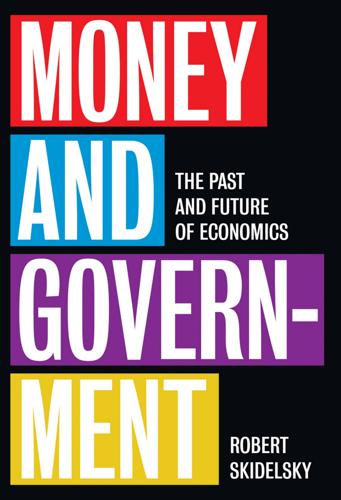
Money and Government: The Past and Future of Economics
by
Robert Skidelsky
Published 13 Nov 2018
To a number of economists outside the mainstream, such as William Black, Stephen Keen, Randall Wray and James Galbraith, it was obvious that the financial system was on an unsustainable roll. Of those in the mainstream, Raghuram Rajan and Robert Shiller can claim credit for having foreseen a crisis, for various reasons. The general cause of the financial collapse had been previsioned by Hyman Minsky in his ‘financial instability hypothesis’: see Minsky (1992). 3. Quoted in Kynaston (2017), p. 358. Montagu Norman to Henry Clay. 4. The original is a bit more verbose than the familiar form given above. Ronald Reagan’s actual words were: ‘In this present crisis, government is not the solution to our problem; government is the problem.’
…
Skidelsky (ed.), Thatcherism. London: Chatto & Windus, pp. 93–106. Mini, P. V. (1974), Philosophy and Economics: The Origins and Development of Economic Theory. Gainesville, Fla.: University Presses of Florida. Ministry of Reconstruction (1944), Employment Policy (Cmd. 6527). London: HMSO. Minsky, H. (1992), Financial Instability Hypothesis. Levy Economics Institute of Bard College, Working Paper No. 74. Minsky, H. (2008 (1986)), Stabilizing an Unstable Economy. New York: McGraw-Hill Education. Mirowski, P. (1999 (1989)), More Heat than Light: Economics as Social Physics, Physics as Nature’s Economics. Cambridge: Cambridge University Press.
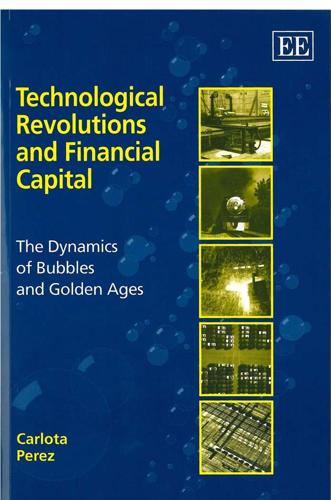
Technological Revolutions and Financial Capital: The Dynamics of Bubbles and Golden Ages
by
Carlota Pérez
Published 1 Jan 2002
Meadows, Donella H., Meadows, Dennis and Randers, Jorgen (1972), The Limits to Growth, New York: Universe Books. Mensch, Gerhard (1979), Stalemate in Technology, Cambridge, MA: Ballinger. Michie, Ranald C. (1987), The London and New York Stock Exchanges 1850– 1914, London: Allen & Unwin. Minsky, Hyman (1975), John Maynard Keynes, New York: Columbia University Press. Minsky, Hyman (1982), ‘The Financial-Instability Hypothesis: Capitalist Processes and the Behavior of the Economy’, in Kindleberger and Laffargue (eds), pp. 13–39. Minsky, Hyman (1986), Stabilizing an Unstable Economy, New Haven and London: Yale University Press. Mowrey, Mark A. (2000), ‘Web Companies Find 1999 Venture Capital Windfall’, The Industry Standard, February 7.
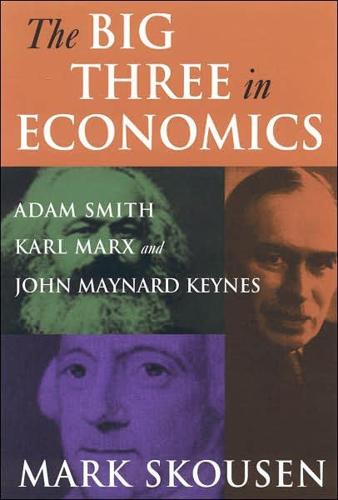
Big Three in Economics: Adam Smith, Karl Marx, and John Maynard Keynes
by
Mark Skousen
Published 22 Dec 2006
According to Keynes's model, the classical model only applies when the economy reaches full employment (Qj), while the Keynesian general theory applies at any point along the AS curve where it intersects with the AD curve. Who's to Blame? Irrational Investors! Keynes blamed the instability of capitalism on the bad behavior of investors. The General Theory creates a macroeconomic model based essentially on a financial instability hypothesis. As Keynesian economist Hyman P. Minsky declares, "The essential aspect of Keynes's General Theory is a deep analysis of how financial Figure 5.1 Aggregate Supply (AS) and Aggregate Demand (AD) Model from a Keynesian Perspective p Source: Byrns and Stone (1987: 311). Reprinted by permission of Scott, Foresman and Co.
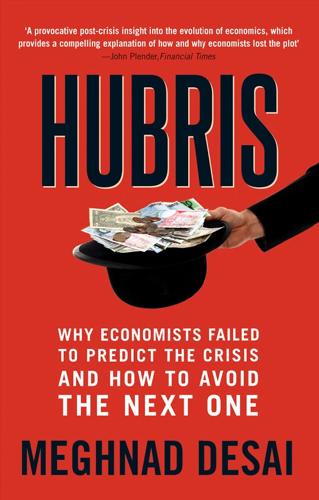
Hubris: Why Economists Failed to Predict the Crisis and How to Avoid the Next One
by
Meghnad Desai
Published 15 Feb 2015
Mankind thus inevitably sets itself only such tasks as it is able to solve, since closer examination will always show that the problem arises only when the material conditions for its solution are already present or at least in the course of formation.9 Perhaps he was right on this one observation. We shall solve the problems yet. No one can say just how. NOTES Introduction: Unraveling the Threads 1.The definition is from Raymond Goldsmith, “Comment on Hyman P. Minsky, ‘The Financial Instability Hypothesis,’” in C. P. Kindleberger and J. P. Lafargue, eds, Financial Crises: Theory, History and Policy (Cambridge University Press, Cambridge, 1982), p. 42. 2.See Timothy Geithner, Stress Test: Reflections on Financial Crises (Random House Business Books, London, 2014). 3.Raghuram Rajan, “Has Financial Development Made the World Riskier?”
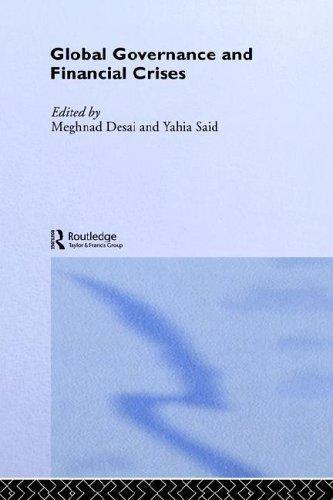
Global Governance and Financial Crises
by
Meghnad Desai
and
Yahia Said
Published 12 Nov 2003
(eds) (1982), Financial Crises: Theory, History and Policy, Cambridge University Press, Cambridge. Lowenstein, R. (2000) When Genius Failed: The Rise and Fall of Long-Term Capital Management, Random House, New York. Marx, K. (1867/1884) Capital Vol. 1 (various editions). Minsky, H. P. (1982) ‘The financial-instability hypothesis: capitalist processes and the behaviour of the economy’, in C. P. Kindleberger and L.-P. Laffargne (eds), Financial Crises: Theory, History and Policy, Cambridge University Press, Cambridge, pp. 13–39. Schumpeter, J. A. (1982 reprinted) Business Cycles: A Theoretical, Historical, and Statistical Analysis of the Capitalist Process, Porcupine Press, Philadelphia.
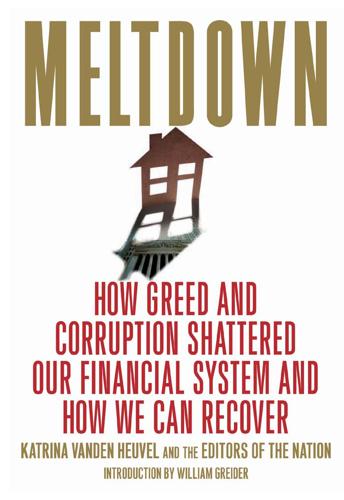
Meltdown: How Greed and Corruption Shattered Our Financial System and How We Can Recover
by
Katrina Vanden Heuvel
and
William Greider
Published 9 Jan 2009
Minsky’s writings, and the post-Keynesian tradition more generally, are highly critical of free-market capitalism and its defenders in the economics profession—among them Milton Friedman and other Nobel Prize–winning economists who for a generation have claimed to “prove,” usually through elaborate mathematical models, that unregulated markets are inherently rational, stable and fair. For Friedmanites, regulations are harmful most of the time. Minsky, by contrast, explained throughout his voluminous writings that unregulated markets will always produce instability and crises. He alternately termed his approach “the financial instability hypothesis” and “the Wall Street paradigm.” For Minsky, the key to understanding financial instability is to trace the shifts that occur in investors’ psychology as the economy moves out of a period of crisis and recession (or depression) and into a phase of rising profits and growth. Coming out of a crisis, investors will tend to be cautious, since many of them will have been clobbered during the just-ended recession.
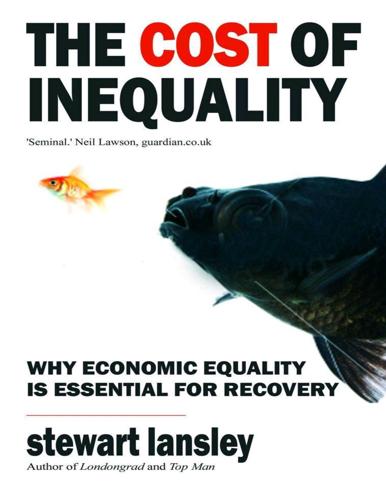
The Cost of Inequality: Why Economic Equality Is Essential for Recovery
by
Stewart Lansley
Published 19 Jan 2012
The chiefs were more ‘knaves than fools’.389 Two decades earlier, long before the tsunami of new financial instruments, the American economist, Hyman Minsky—who died in 1996—had warned that deregulated financial markets would intensify the tendency of market economies to speculation and instability. Minsky was a post-Keynesian economist and critic of the free-market school who developed what he called the ‘financial instability hypothesis’ that integrated the role of finance into the Keynesian framework. In Stabilizing an Unstable Economy, published in 1986, he argued that Wall Street and other financial centres would generate destabilizing forces, making the behaviour of the economy incoherent and subjecting economies to serious threats of financial and economic instability.
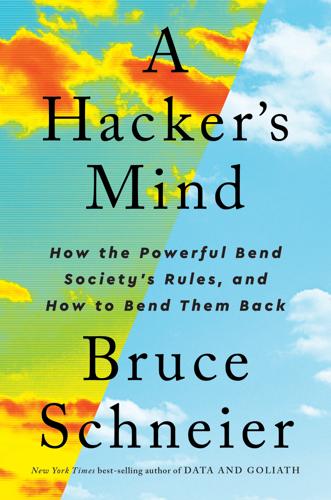
A Hacker's Mind: How the Powerful Bend Society's Rules, and How to Bend Them Back
by
Bruce Schneier
Published 7 Feb 2023
Paul Watro (10 Aug 1981), “The battle for NOWs,” Federal Reserve Bank of Cleveland, https://www.clevelandfed.org/en/newsroom-and-events/publications/economic-commentary/economic-commentary-archives/1981-economic-commentaries/ec-19810810-the-battle-for-nows.aspx. 76we’ll see it again and again: Although he never used the word “hacking,” Hyman Minsky discussed this. Hyman Minsky (May 1992), “The financial instability hypothesis,” Working Paper No. 74, The Jerome Levy Economics Institute of Bard College, https://www.levyinstitute.org/pubs/wp74.pdf. 76banks had moved 95%: Charles Levinson (21 Aug 2015), “U.S. banks moved billions of dollars in trades beyond Washington’s reach,” Reuters, https://www.reuters.com/investigates/special-report/usa-swaps.
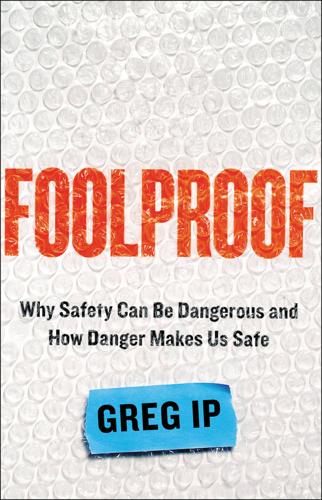
Foolproof: Why Safety Can Be Dangerous and How Danger Makes Us Safe
by
Greg Ip
Published 12 Oct 2015
The fact was, however, that crises had come and gone while leaving surprisingly little mark on the economy. Markets had not been so turbulent since the 1930s, noted Paul Krugman, yet the economy had chugged along for seven years “without either turning into a runaway boom or stalling into a recession.” Minsky’s message was that the good times would not last. “The financial instability hypothesis is pessimistic,” he warned. “Capitalism is flawed in that thrusts to financial and economic crises are endogenous phenomena.” Despite his inclusion in the program, Minsky was still a relative outsider among these academic celebrities, and he drew little attention. Volcker was a different matter.
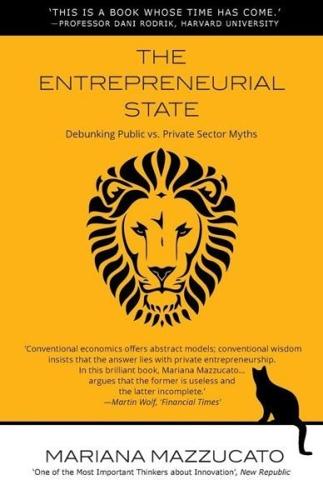
The Entrepreneurial State: Debunking Public vs. Private Sector Myths
by
Mariana Mazzucato
Published 1 Jan 2011
Citizens for Tax Justice and the Institute on Taxation and Economic Policy. Available online at http://www.ctj.org/corporatetaxdodgers/CorporateTaxDodgersReport.pdf (accessed 25 July 2012). Mia, H. et al. 2010. ‘A Survey of China’s Renewable Energy Economy’. Renewable and Sustainable Energy Reviews 14: 438–45. Minsky, H. P. 1992. ‘The Financial Instability Hypothesis’. Jerome Levy Economics Institute Working Paper no. 74, May. Mirowski, P. 2011. Science-Mart. Cambridge, MA: Harvard University Press. MIT (Massachusetts Institute of Technology). 2013. A preview of the MIT production in the ‘Innovation Economy Report’, edited by Richard M. Locke and Rachel Wellhausen, mit.edu, 22 February.
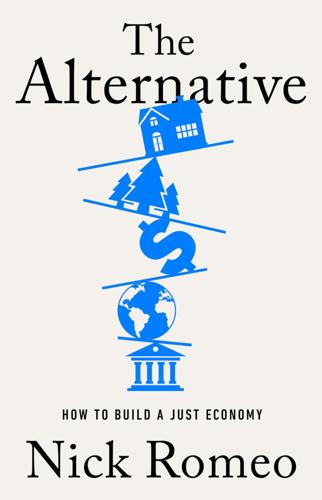
The Alternative: How to Build a Just Economy
by
Nick Romeo
Published 15 Jan 2024
Pluralism is not merely a pleasant and broadening experience for undergraduates. It could introduce ideas that would help predict and remedy economic crises and address issues ranging from the climate crisis to gender equality. One example is the post-Keynesian economist Hyman Minsky’s financial instability hypothesis, according to which prosperity drives speculative activity and ultimately bubbles and busts, which was largely ignored by neoclassical economists despite the fact that it describes the 2008 crash with eerie precision.51 Another example is Kate Raworth’s doughnut economics model. The doughnut model proposes that all economic activity must remain within a narrow band, avoiding both shortages in basic needs (visualized as the interior of the doughnut) and excesses that outstrip ecological limits (the area beyond the doughnut).
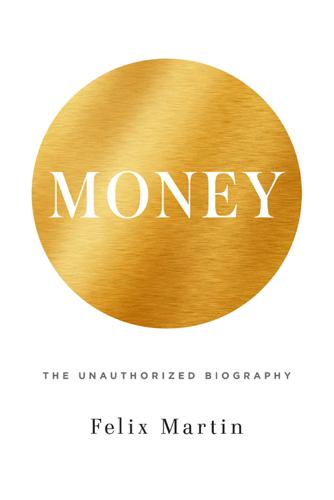
Money: The Unauthorized Biography
by
Felix Martin
Published 5 Jun 2013
The idea of central-bank independence, unlike inflation targeting, is not associated specifically with New Keynesian theory—its origins lie in an earlier literature, notably Rogoff, 1985—though it was only once the New Keynesian approach had become the most widely used framework for policy-making that it achieved a concrete institutional impact. 27. Turner, 2012. 28. Minsky, H., “The Financial Instability Hypothesis: Capitalist Processes and the Behaviour of the Economy,” in Kindleberger and Laffargue, 1982. 29. King, M., 2002, pp. 162 and 173. 30. Ibid. 14 How to Turn the Locusts into Bees 1. See http://en.wikipedia.org/wiki/Locust_(finance). The term became widely used in political debate in the run-up to the September 2005 federal elections in Germany. 2.

The Economics of Enough: How to Run the Economy as if the Future Matters
by
Diane Coyle
Published 21 Feb 2011
Princeton: Princeton University Press. Miles, Nicholas, Charu Wilkinson, Jakob Edler, Mercedes Bleda, Paul Simmonds, and John Clark. 2009. “Wider Conditions for Innovation.” Pamphlet. London: National Endowment for Science, Technology and the Arts. Mill, J. S. 1863. Utilitarianism. Minsky, Hyman P. 1992. “The Financial Instability Hypothesis.” Working Paper No. 74 (May). Annandale on Hudson, NY: Jerome Levy Economics Institute, Bard College. Musgrave, Richard A., and Peggy B. Musgrave. 1973. Public Finance in Theory and Practice. New York: McGraw Hill. Nannicini, Tommaso, Andrea Stella, Guido Tabellini, and Ugo Troiano. 2010.
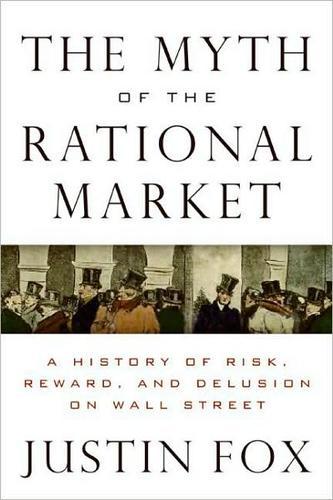
The Myth of the Rational Market: A History of Risk, Reward, and Delusion on Wall Street
by
Justin Fox
Published 29 May 2009
A notable exception was MIT economist Charles Kindleberger. But Kindleberger’s 1978 history, Manias, Panics and Crashes: A History of Financial Crises (New York: Basic Books, 1978), which drew heavily on Minsky’s theories, also seemed to draw far more readers from trading floors than economics seminar rooms. 8. Hyman P. Minsky, “The Financial Instability Hypothesis: A Restatement,” Thames Papers in Political Economy (Autumn 1978). Reprinted in Can “It” Happen Again: Essays on Instability and Finance (Armonk, N.Y.: M. E. Sharpe, 1982), 106. 9. Mark Zandi, “Where are the Regulators?” Moody’s Economy.com, Nov. 1, 2005, www.economy.com/home/article.asp?
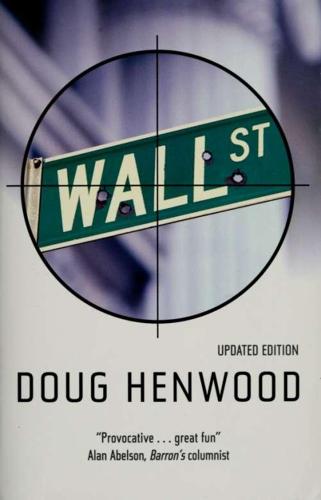
Wall Street: How It Works And for Whom
by
Doug Henwood
Published 30 Aug 1998
"Longer Waves in Financial Relations: Financial Factors in the More Severe Depres- sions," reprinted in Thomas Mayer, ed., International Library of Critical Writings in Economics, 7 (1990) (Aldershot, U.K. and Brookfield, Vt.: Edward Elgar, pp. 352-363. — {1975). John Alaynard Keynes (Ne-w York: Columbia University Press). — (1978). "The Financial Instability Hypothesis: A Restatement," Thames Papers in Politi- cal Economy, reprinted in Minsky (1982a), pp. 90-116. — (1982a). Can "It" Happen Again? (Kmionk, NY.: M.E. Sharpe, Inc.). — (1982b). "Debt Deflation Processes in Today's Institutional Environment," Banca Nazionale del Lavoro Review 143 (December), pp. 375-393

The Making of Global Capitalism
by
Leo Panitch
and
Sam Gindin
Published 8 Oct 2012
See also Barry Eichengreen, The European Economy since 1945: Coordinated Capitalism and Beyond, Princeton: Princeton University Press, 2008, Chapter 8. 53 Quoted in Robert Flanagan, David Soskice, and Lloyd Ulman, Unionism, Economic Stabilization and Incomes Policies, Washington, DC: Brookings Institution, 1983, pp. 141–2. 54 Eichengreen, Globalizing Capital, p. 128. 55 Giovanni Arrighi, “The Social and Political Economy of Global Turbulence,” New Left Review I/20 (March–April 2003), pp. 35–6. 56 Department of Commerce, Bureau of Economic Analysis, National Income and Product Accounts, Table 3.1. Available at bea.gov. 57 Edwin Dickens, “A Political-Economic Critique of Minsky’s Financial Instability Hypothesis: The Case of the 1966 Financial Crisis,” Review of Political Economy 11: 4 (1999), pp. 392–3. 58 “In addition to limiting the buildup of dollar assets in foreign official hands, these goals included easing Treasury financing operations, limiting financial disintermediation, promoting the growth of bank credit, especially mortgage loans, discouraging inflation, and clearly the top priority, encouraging a more complete utilization of the nation’s [resources].”
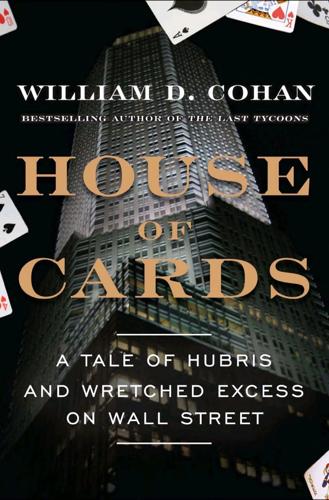
House of Cards: A Tale of Hubris and Wretched Excess on Wall Street
by
William D. Cohan
Published 15 Nov 2009
This creates a panic that can spiral ever downward. For banks and securities firms, where the confidence of counterparties is essential, the death spiral can indeed be irreversible. To Schwartz, the near-collapse of the global financial system was caused by many factors, from Hyman Minsky's financial instability hypothesis—which suggests that whenever the economy is stable for a long period, the financial markets create their own instability—to the dramatic and unprecedented surge of global wealth. “If you go back to the period from 1970 to 1974,” he told his friends, “there was a doubling of commodity prices.